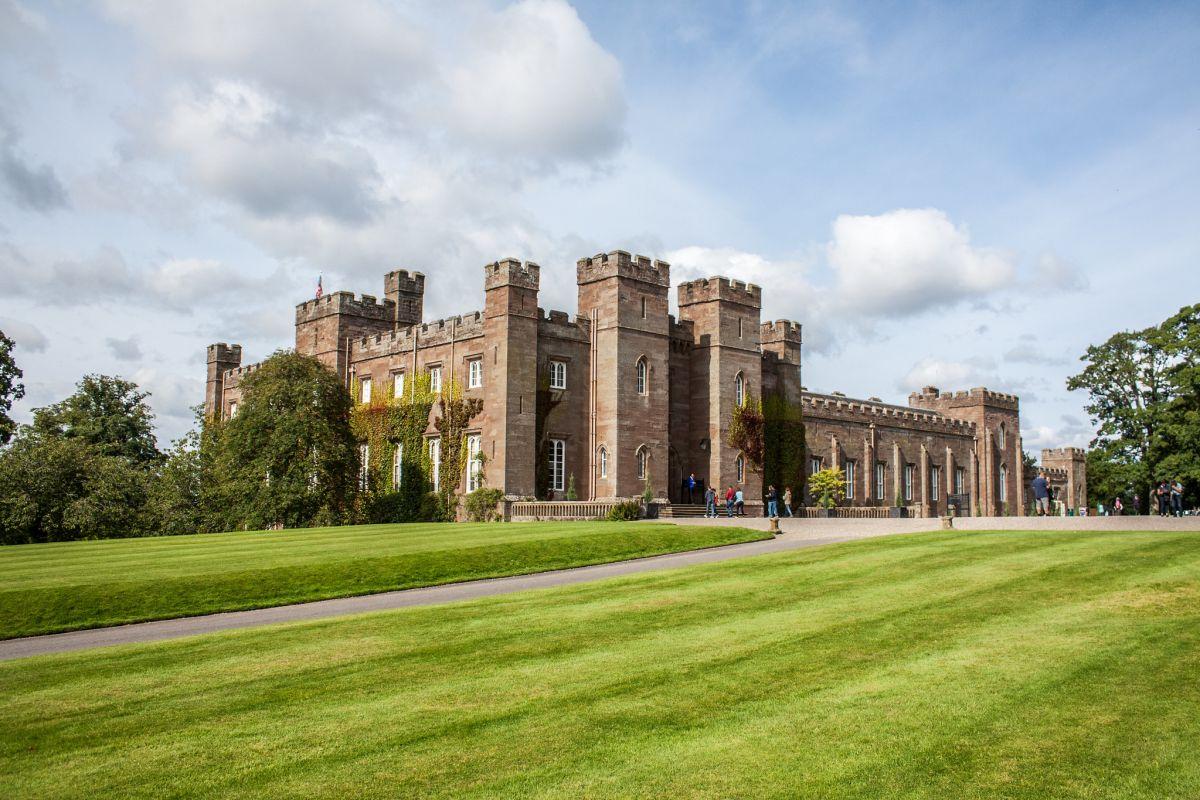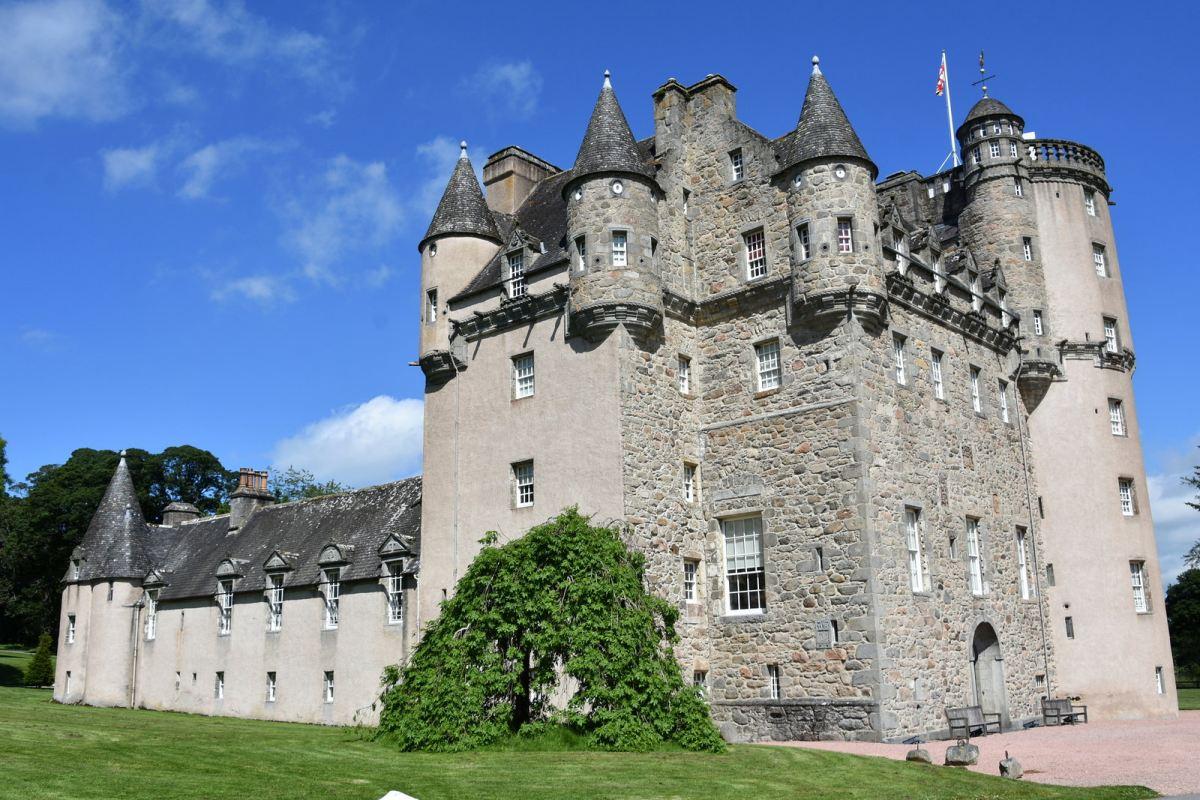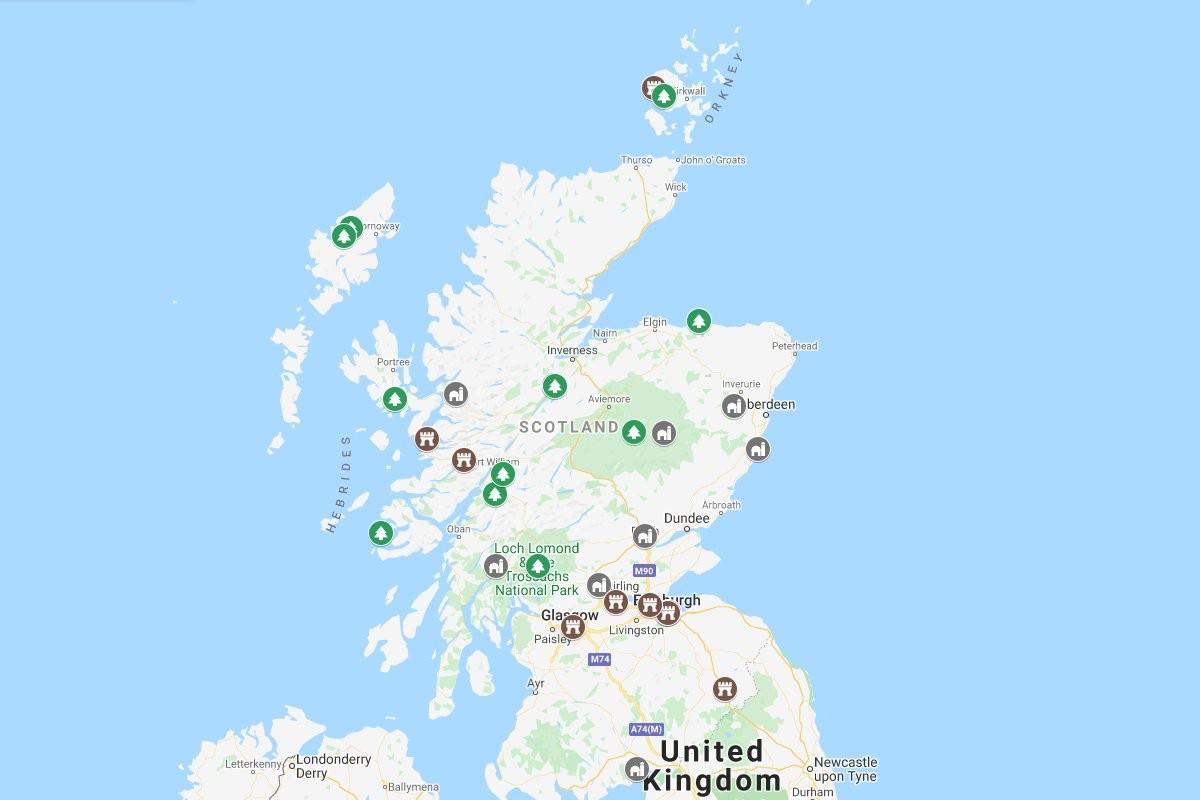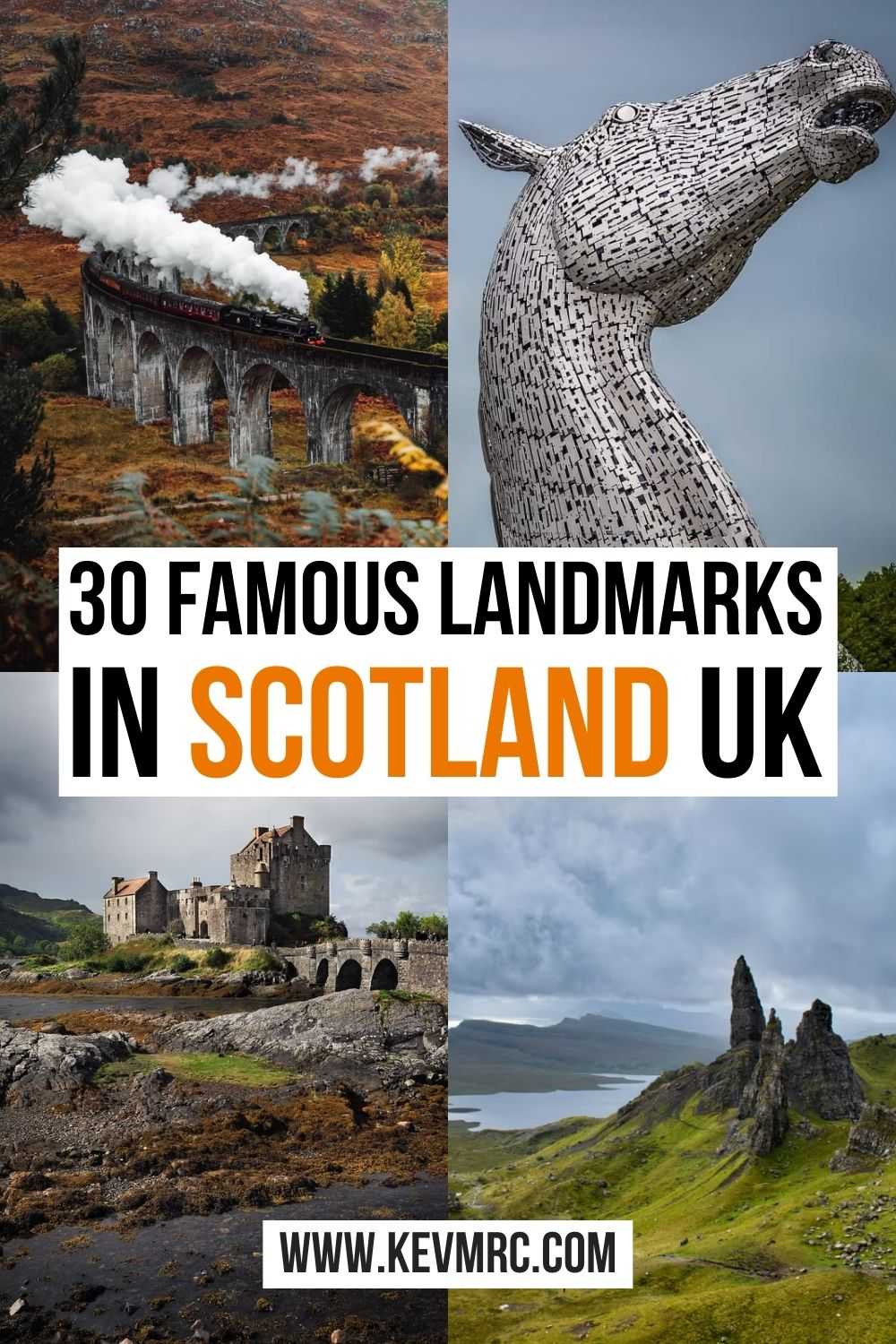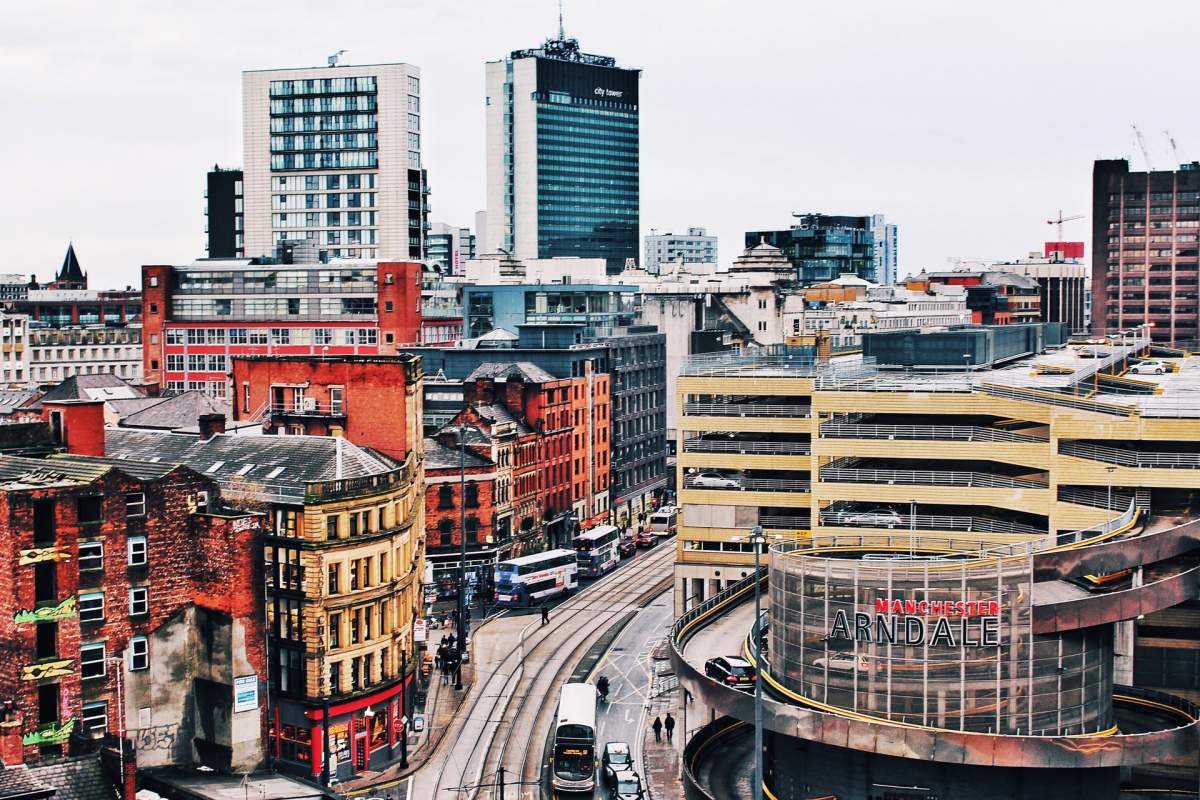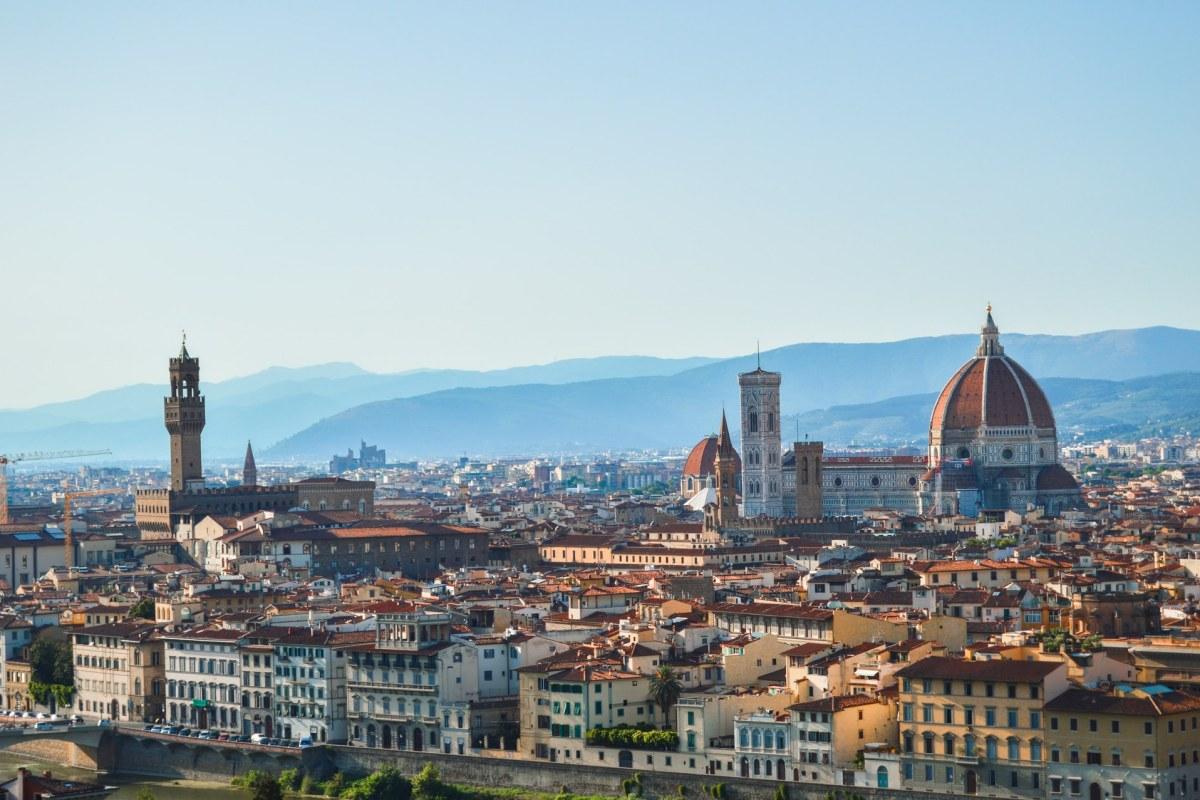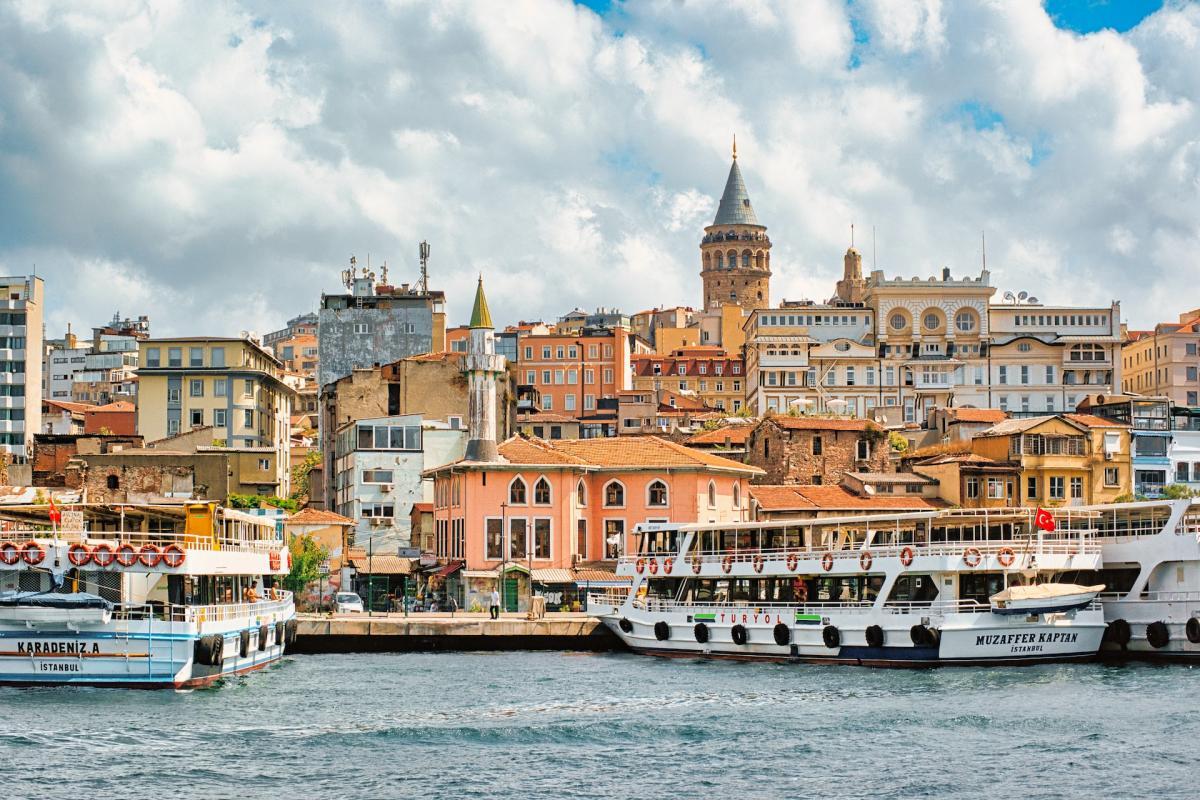30 Famous Landmarks in Scotland You Need To Visit
Scotland is a place of incredible imagination, with rich Celtic legends and a growing reputation as a leading destination in Europe. Indeed, this land of the United Kingdom has a lot to offer to its visitors: whether you’re an adventurous, foodie, cultural or historical tourist, Scotland is the perfect country for anyone looking for a getaway.
Wondering what are the famous landmarks in Scotland?
Here are the top 30 famous Scottish landmarks in this post! 🏴
Full List of the 30 Famous Landmarks of Scotland
To make it easier, we’ve breakdown the famous Scotland landmarks into 3 separate categories: the castles, the monuments, and the natural landmarks.
🏰 Famous castles in Scotland:
- Stirling Castle
- Edinburgh Castle
- Palace of Holyroodhouse
- Balmoral Castle
- Urquhart Castle
- Inveraray Castle
- Eilean Donan Castle
- Dunnottar Castle
- Scone Palace
- Caerlaverock Castle
- Castle Fraser
🏛 Famous monuments in Scotland:
- Glenfinnan Viaduct
- St Giles’ Cathedral
- Glasgow Cathedral
- Skara Brae
- Jedburgh Abbey
- The Kelpies
- Mallaig
- Forth Bridge
🌳 Natural landmarks in Scotland:
- Loch Ness
- Isle of Skye
- Bow Fiddle Rock
- Cairngorms National Park
- Loch Lomond & The Trossachs National Park
- Staffa
- Ring of Brodgar
- Lewis and Harris
- Callanish Standing Stones
- Glen Coe
- Ben Nevis
So, here’s the list of the famous landmarks Scotland has to offer. To learn more about each of these places, keep reading below.👇
Famous Castles in Scotland
When you think of Scotland, you immediately think of those famous castles that are part of the Scottish landscape. These castles, telling the story of Scottish power, fascinate and amaze visitors with their greatness and beauty. Like in fairy tales, the castles of Scotland have a mysterious and magical side.
This is our selection of the castles that rank in the most famous landmarks of Scotland.
1. Stirling Castle
Built in the town of Stirling only 50 kilometers north of Edinburgh and Glasgow, this medieval remnant is one of the largest and most beautiful castles in Scotland.
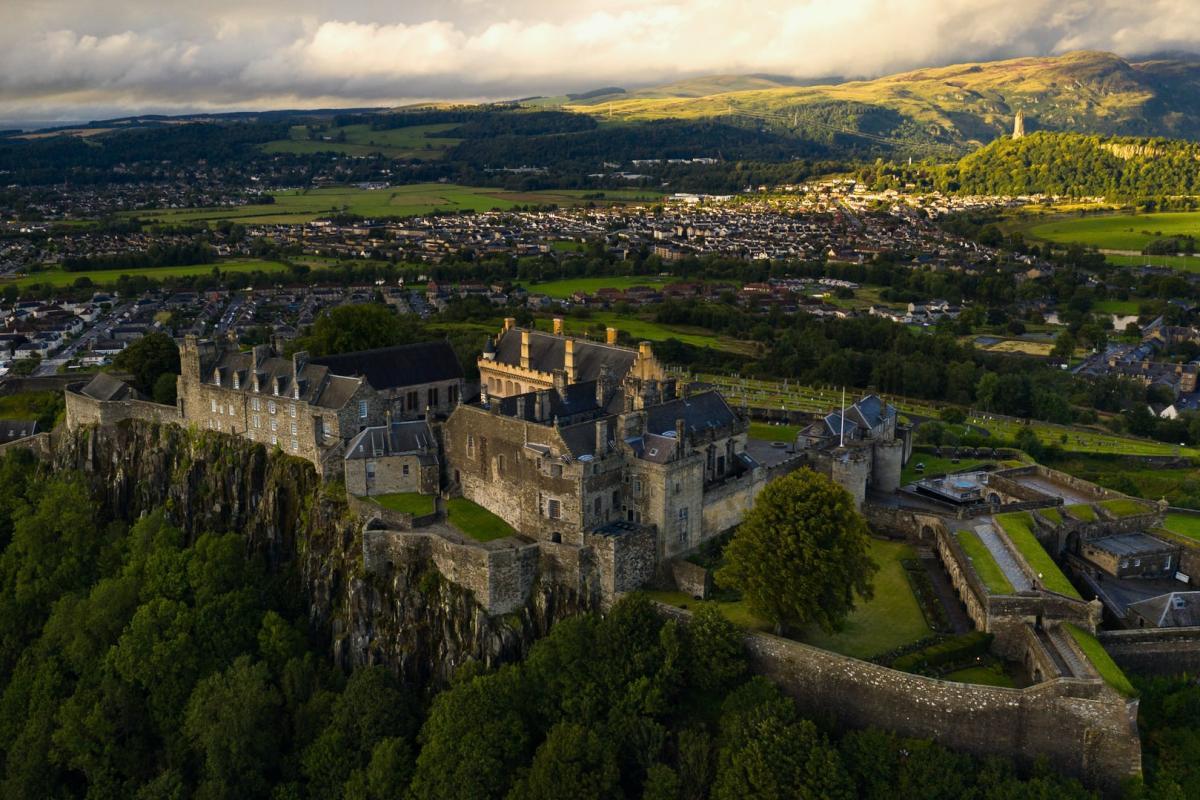
The first records of the castle stretch back to the 12th century, when King Alexander I built a chapel here. After the death of King Alexander III in 1286, the conflicts of succession to the Scottish throne and the wars of independence started. From the 13th to the 14th century, the city of Stirling and its castle kept switching from English to Scottish hands, following the victories and defeats of both sides. Finally, the Stuarts put an end to the wars of independence and started renovating the castle which turned into a real palace during the Renaissance. It was here that Mary Queen of Scots was crowned queen before she left for the French court.
A visit to Stirling Castle will undoubtedly be one of the highlights of your trip to Scotland. You’ll be amazed by the largest banquet hall ever built in Scotland, the royal palace, and the vaults.
2. Edinburgh Castle
Located on the Royal Mile in the heart of Edinburgh Old City, Edinburgh Castle is a beautiful fortress overlooking the city from the steep hills of Castle Rock. It’s the most visited attraction in Scotland.
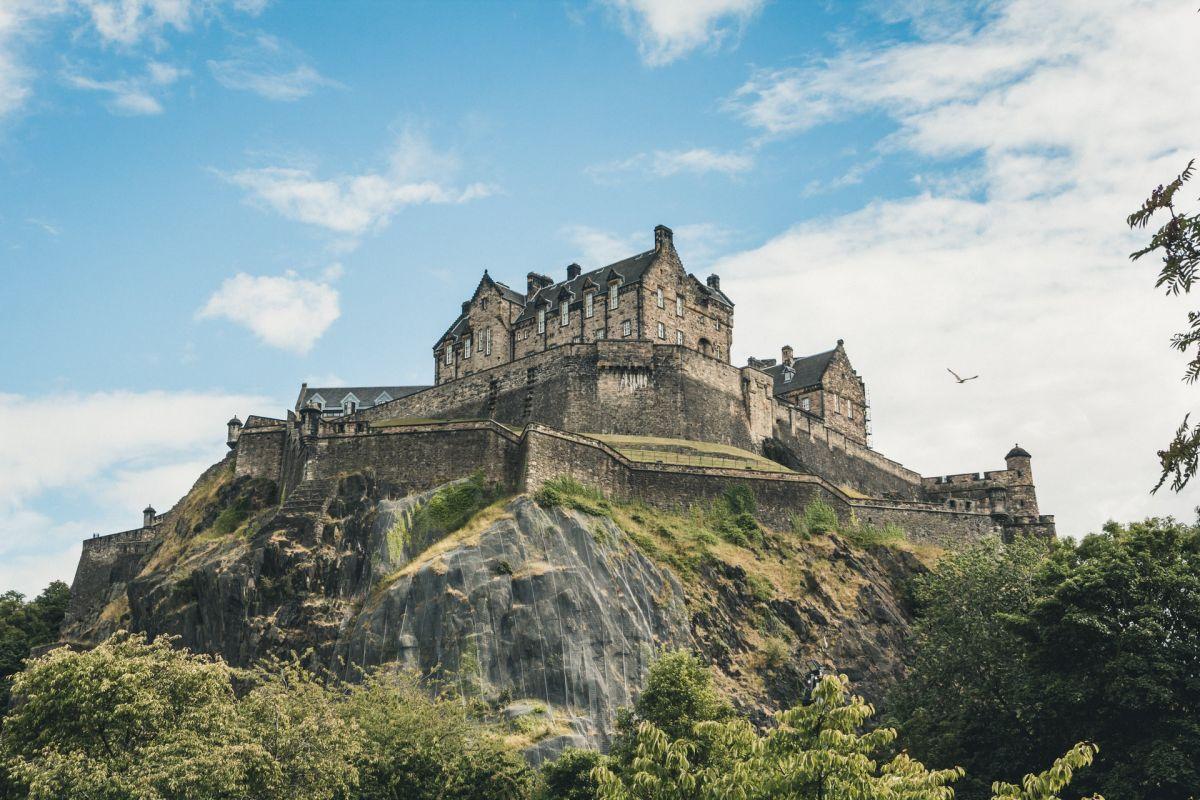
Edinburgh Castle is a remnant of the rivalries between England and Scotland. Built in the 12th century, the castle served as a military base and royal palace for many Scottish kings and queens including legendary Mary Stuart, who gave birth to James I of England in this castle.
Inside the castle, visitors can see many royal objects including the famous crown jewels. Outside, you can see the gardens and a small chapel but the highlight of the visit is definitely the stunning view you’ll have over Edinburgh.
3. Palace of Holyroodhouse
Located on the edge of the Old Town of Edinburgh, the Palace of Holyroodhouse is one of the royal palaces of the English crown.
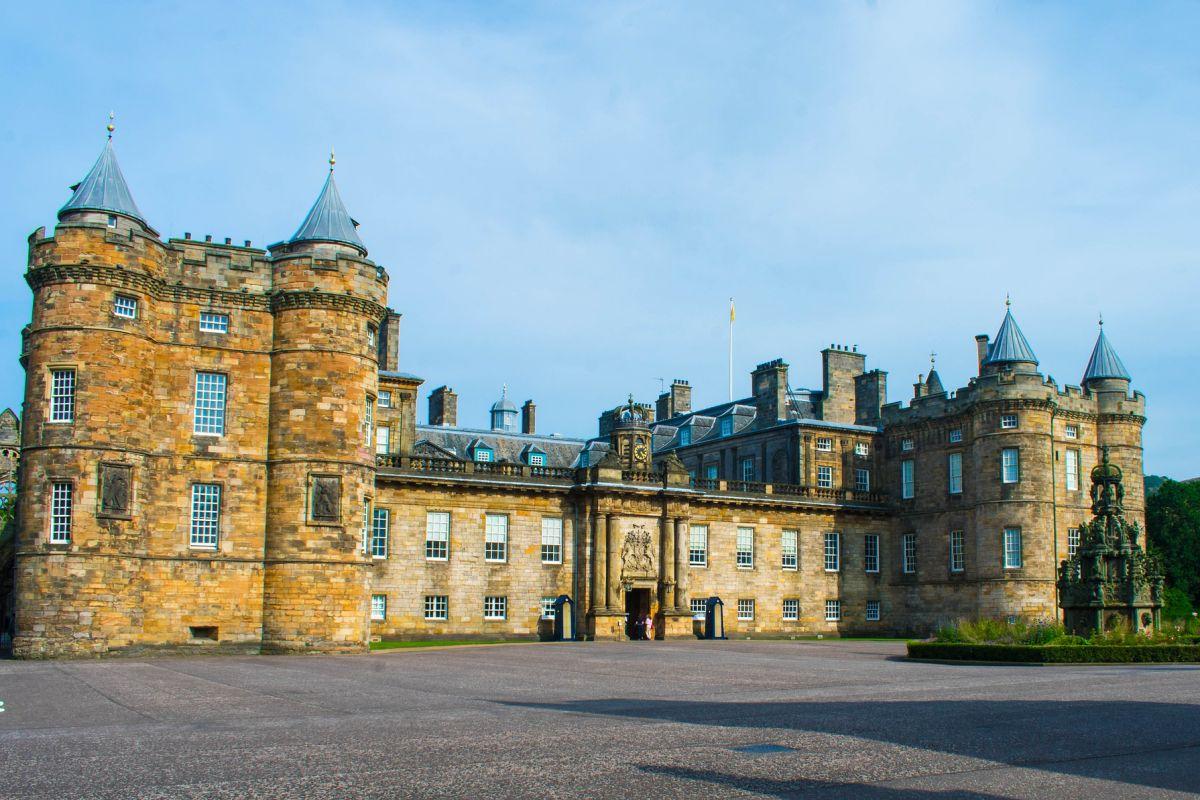
Built in the 12th century by King David I, the Palace of Holyroodhouse was first a monastery. From the 15th century and onwards, the palace served as the main residence for the king and queens of Scotland, including Mary Queen of Scotts in the 16th century. Today, the Palace of Holyroodhouse is still used as a royal residence and Queen Elizabeth II comes every year to spend a few days in July.
This wonder of architecture is open to the public for guided tours when the royal family isn’t here. The visit includes the castle interiors, the ruins of the abbey, and the gardens.
4. Balmoral Castle
Balmoral Castle is the summer residence of the royal family in the Scottish Highlands since Queen Victoria.
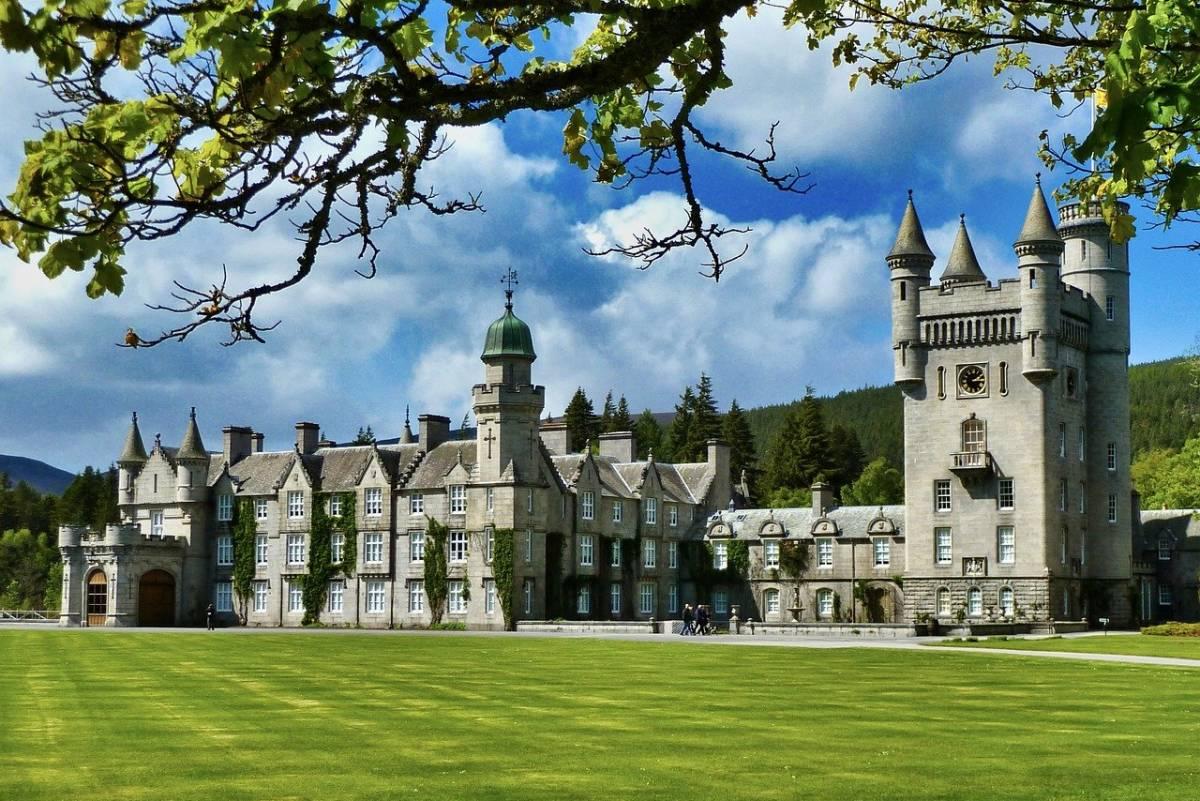
Balmoral Castle was purchased by Queen Victoria in 1852 after a vacation there. The original castle was considered too small for the needs of the royal family, so the crown decided to build a new one nearby under the supervision of Prince Albert, Queen Victoria’s husband. Balmoral Castle remains Queen Elizabeth’s favorite summer home and she stays here every year from mid-August to mid-October.
Like the Palace of Holyroodhouse, Balmoral Castle’s grounds, garden, and ballroom are open to the public only when the royal family isn’t present. The ballroom is well worth a thorough visit as it features beautiful silver and porcelain objects and paintings. The rest of the castle is unfortunately not open to the public.
5. Urquhart Castle
There is a reason why Urquhart Castle is one of the most visited places every year: its location. This monument is located on the edge of the famous Loch Ness.
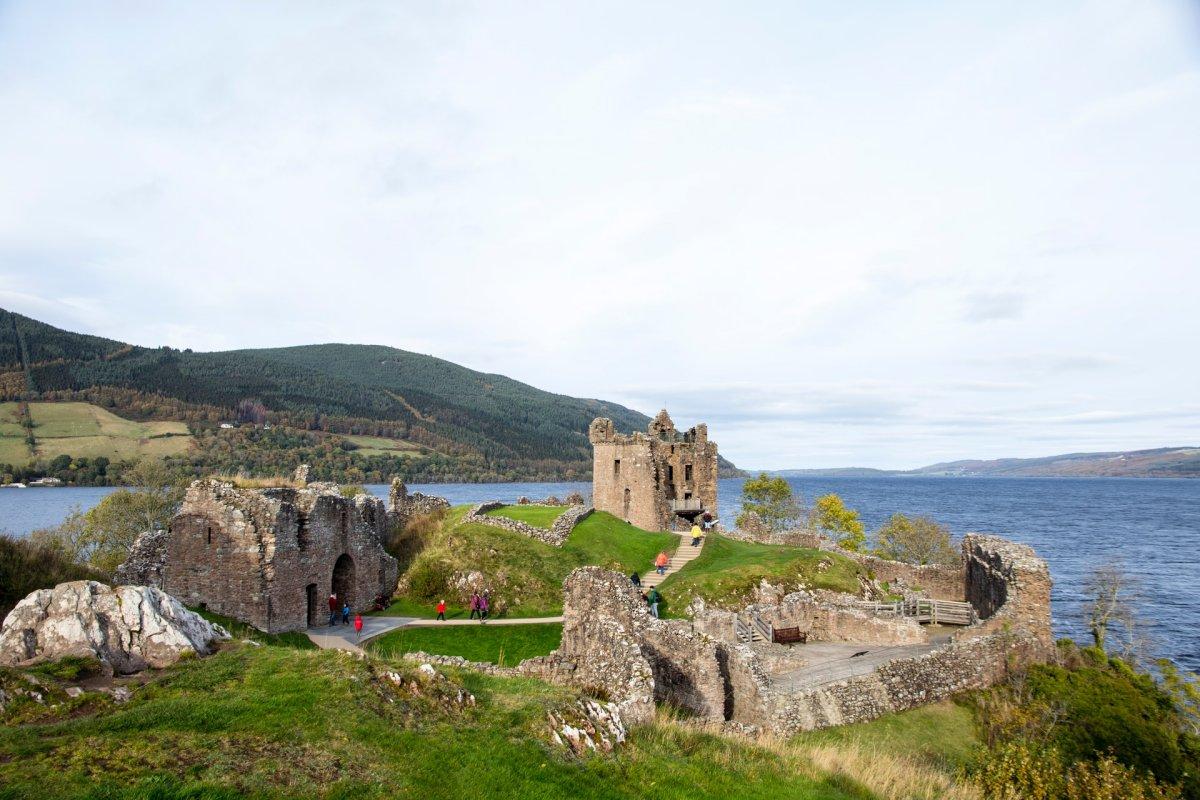
Built in the middle of the 13th century on the ruins of an ancient fortification dating back to the Iron Age, the fortress changed owners on various occasions during the Scottish wars of independence. It was finally destroyed by the English in 1692 so that the building could never be taken by the Jacobites. Today, all that remains of the castle is a tower and part of the fortifications.
You can get to Urquhart Castle from Fort Williams and from Inverness. Although only a few ruins remain, the Urquhart visitor center tells the story of the castle and displays medieval artifacts found during excavations.
6. Inveraray Castle
Located northwest of Glasgow on the shores of Loch Fyne, Inveraray Castle was once the stronghold of Clan Campbell, one of Scotland’s most influential families.
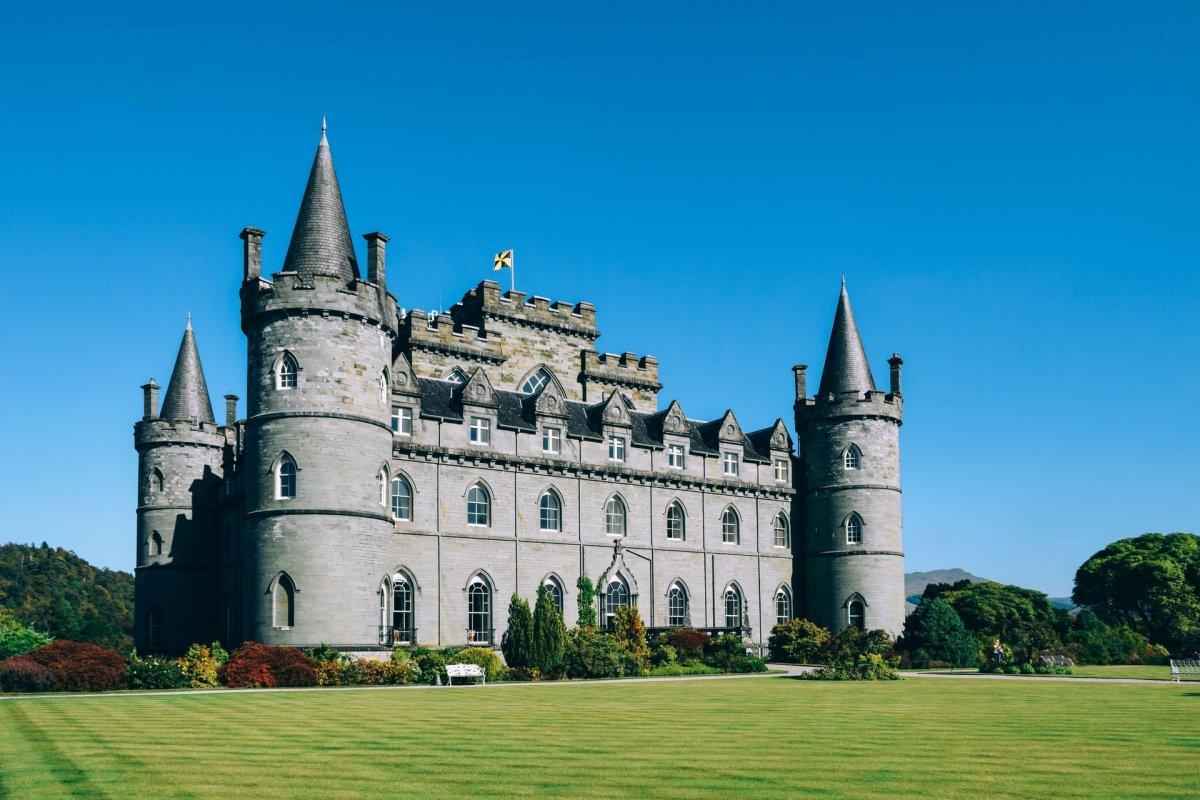
The Campbell family arrived in the Argyll region in the early 13th century at Innischonnell Castle. The first Duke of Argyll, Colin Campbell, decided to replace it with Inveraray Castle and make it the seat of the Campbell clan in the 15th century. Destroyed in the 18th century, it was rebuilt by the 3rd Duke of Argyll Jon Campbell. The new version is a more modern, baroque, and gothic castle.
Inveraray Castle is now a top-rated tourist attraction and is sometimes used as a filming location. For example, an episode of Downton Abbey was filmed there in 2012.
7. Eilean Donan Castle
Located in the Highlands at the crossroads of 3 lochs (Loch Alsh, Loch Duich, and Loch Long) and surrounded by mountains, Eilean Donan is one of the most iconic castles in the country.
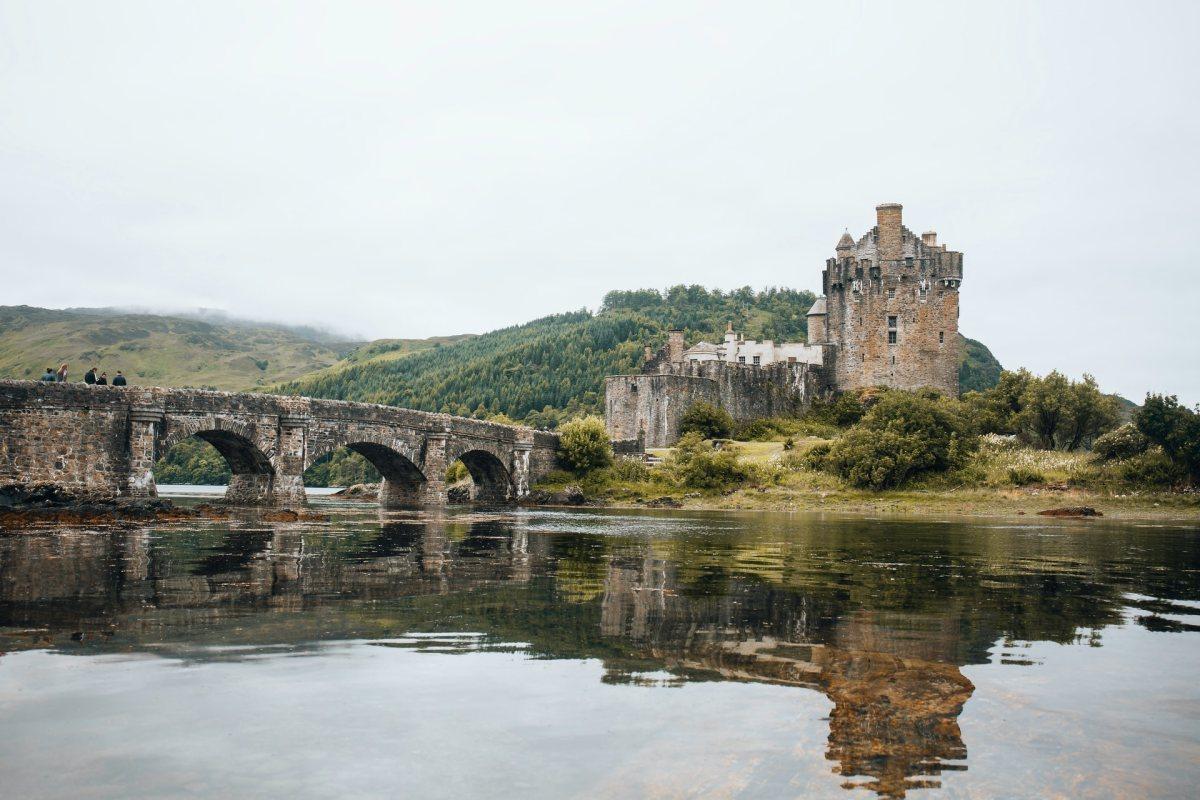
The fortress was originally built in the 13th century to defend the north of the country against Viking attacks and invasions. Reclaimed by the MacKenzie clan in the 14th century, the fortress played a role in the Jacobite risings that ended in its destruction in 1719. After being left in ruins for 200 years, it was purchased by Lieutenant Colonel John Macrae-Gilstrap in 1911, who spent 20 years restoring it.
Eilean Donan Castle is full of charm: it’s connected to the mainland by a pretty little stone bridge, ideal for a souvenir photo. Inside, the different rooms and exposed objects will make you go back in time.
8. Dunnottar Castle
Dunnottar Castle is a famous ruined site located on a cliff edge surrounded by the North Sea, only a few miles from Stonehaven. Its unique and spectacular location makes it one of the most beautiful ruined castles in Scotland.
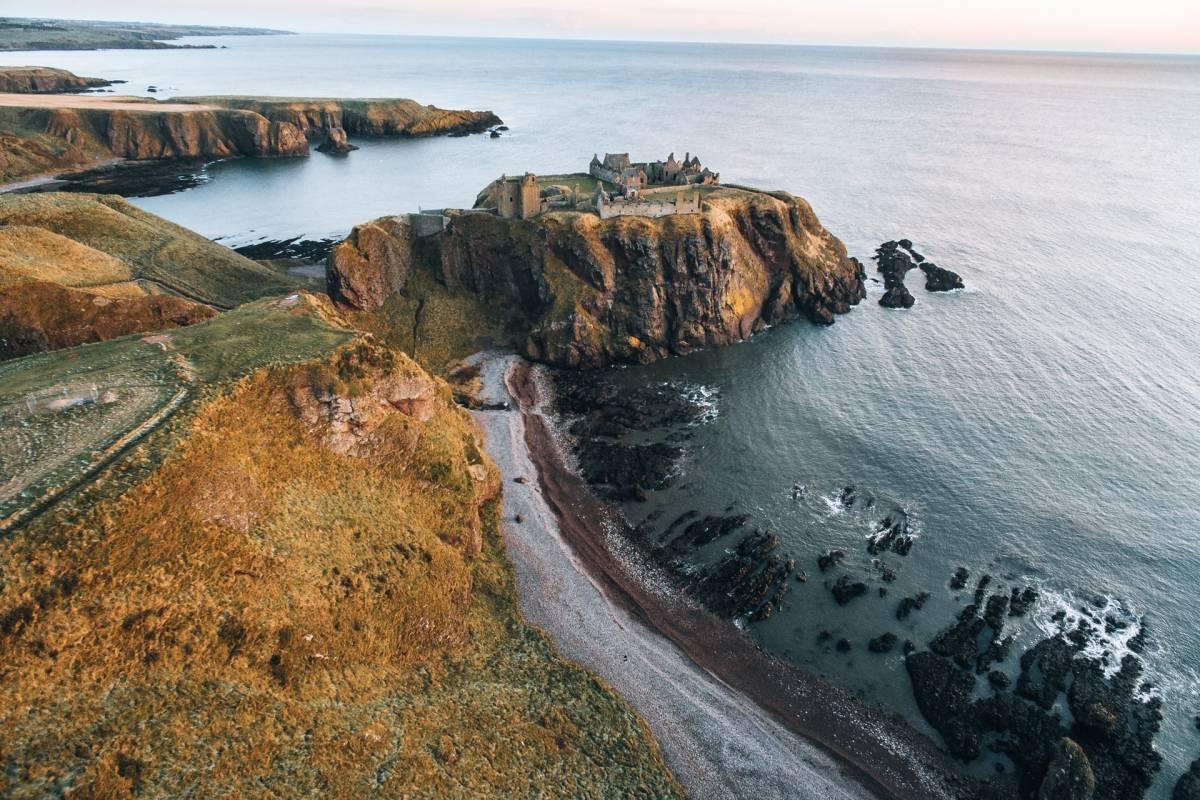
Built in the 14th century, the castle belonged to the Marischals, a powerful Scottish family. Unfortunately, the war didn’t spare the castle and over the centuries, Dunnottar passed from hand to hand, from the government to private owners and wealthy families. During these many changes, the castle was gradually emptied of its valuables.
Dunnottar Castle is now owned by the Pearson family who, after a restoration, have opened the castle to the public. Composed of 11 buildings of various styles and eras, you’ll be amazed by this visit. And the cherry on the cake, the view with the cliffs, the sea and the bay is simply breathtaking!
9. Scone Palace
Located in Perth, 1-hour drive north of Edinburgh, Scone Palace is a wonderful Georgian Gothic castle and one of the most sacred sites in Scotland.
Indeed, the site was named the capital of the kingdom of the Scots and Picts in 846, even before the palace was built. The site has also been the coronation place of Scottish kings for nearly 1,000 years: more than 40 kings have been enthroned here on the Stone of Destiny (or Stone of Scone). Scone Palace was only built in 1808 for the Earl of Mansfield.
Scone Palace houses a beautiful collection of antiques, paintings, and rare objects including French furniture donated by Queen Marie Antoinette. The estate is also not to be missed, with its huge gardens, century-old pine trees, the old prison, and the small maze.
10. Caerlaverock Castle
Located in southwest Scotland almost on the border with England, Caerlaverock Castle is unique in its triangular shape and surrounding moat.
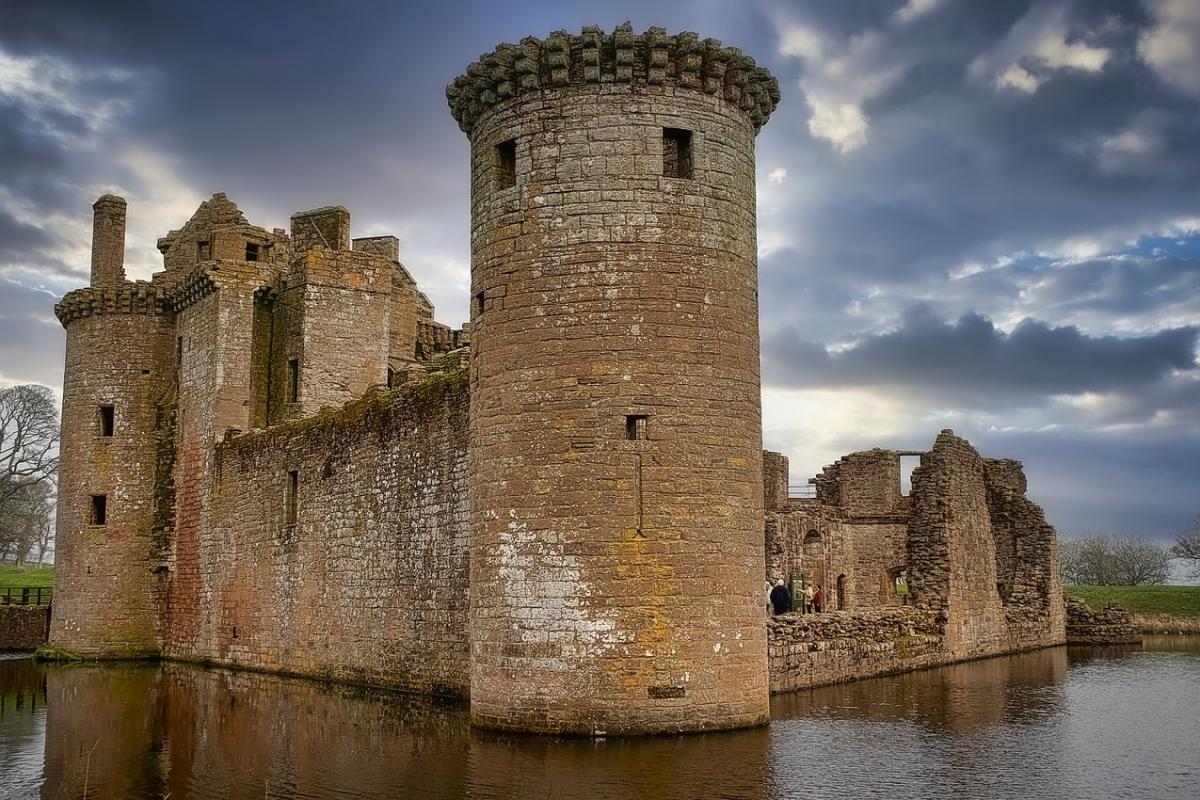
Built in the 13th century to control trade by the Maxwells, the castle has seen a series of dramatic battles between the English and the Scots. Captured by the English in 1300, the castle went through many sieges, changes, alliances and rebuilds before being abandoned in the 17th century.
From its shape, the castle is already unusual but when you cross its drawbridge, you can discover a baroque facade, which is surprising in a medieval castle. The site is also home to rare animals and plants on the castle grounds and in the Caerlaverock Nature Reserve.
11. Castle Fraser
Castle Fraser is the largest castle in Scotland! It’s a perfect example of the Scottish defensive constructions of the 16th-17th century.
Located in Aberdeenshire, this castle bears the name of the family who lived there for 4 centuries. The origins of this castle have roots in the 15th century when King James II of Scotland took over the lands of Marr. Given to Thomas Fraser in 1454 in exchange for other lands, this new owner built a 3-story tower-house still visible today.
Both the interior and exterior are worth a visit! Indeed, the visit to the interior takes you back to the different eras of Scottish history thanks to the portraits placed in each room. As for the exterior, it’s simply stunning! Different trails allow you to discover the estate such as Miss Bristow and Alton Brae.
Famous Monuments in Scotland
Scotland is full of surprises! Indeed, besides castles, Scotland has other types of monuments that make its reputation: churches, royal palaces, bridges and more that are well worth a stay in Scotland.
Let’s discover together some of Scotland historical landmarks that aren’t castles.
12. Glenfinnan Viaduct
The Glenfinnan viaduct is a 30-meter high construction feat from the 20th century located in Eastern Scotland. It connects the town of Fort William to Mallaig, where there’s a ferry to the Isle of Skye.
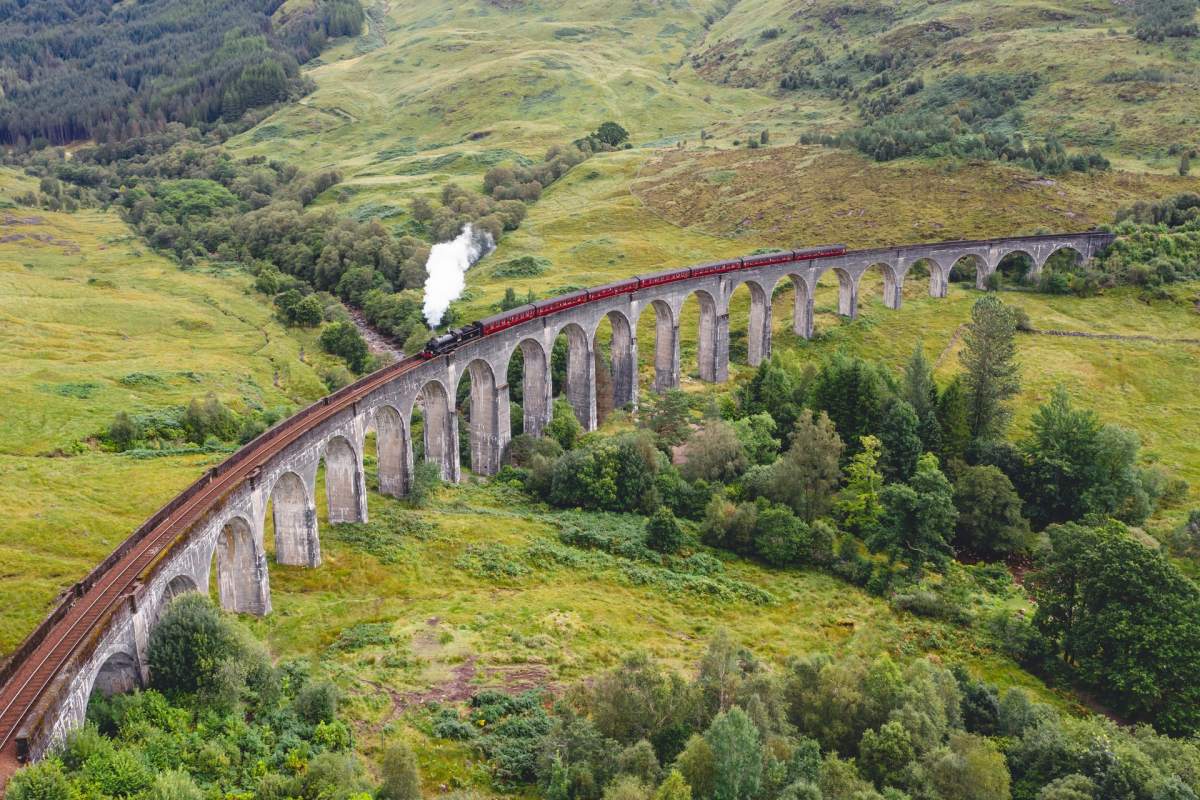
The viaduct is one of the most famous buildings in Scotland, and for good reason: it was the major source of inspiration for Harry Potter’s Hogwarts Express!
You can watch the famous Jacobite Express in spring and summer from the official viewpoint. If you want to have a closer look at the viaduct and the train’s passage, go to the Glenfinnan Train Museum: from there, you can walk for about 45 minutes on a small path offering breathtaking views of the viaduct. You can also take a ride on the Jacobite Express if you prefer experiencing it from the inside!
13. St Giles’ Cathedral
Located in the Old Town of Edinburgh, St Giles’ Cathedral is an iconic monument of the Scottish capital city.
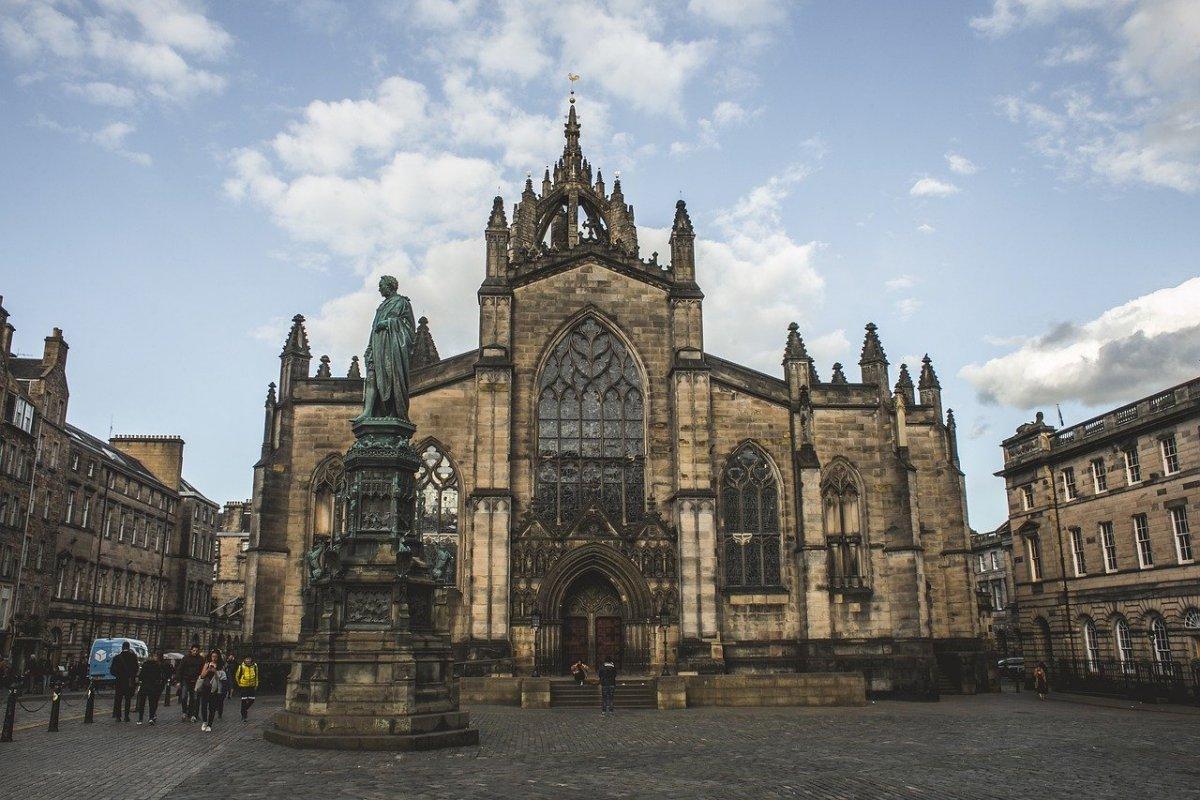
Completed in 1120, St Giles’ Cathedral was initially a Catholic church. The church became a symbol of Presbyterianism in the 16th century, and then gained the status of a cathedral in the 17th century. Its Gothic style goes back to the 15th century, following its rebuilding after a fire burned the city in 1385.
The interior of the cathedral is as beautiful as the outside. Its spire, which rises to a height of about 50 meters, can be seen from afar and dominates the entire Old Town. But its main asset is the magnificent colored stained glass windows, as well as its chapels, in particular the famous Thistle Chapel.
14. Glasgow Cathedral
Also known as High Kirk or St Mungo’s Cathedral, Glasgow Cathedral is the most famous landmark of the city.
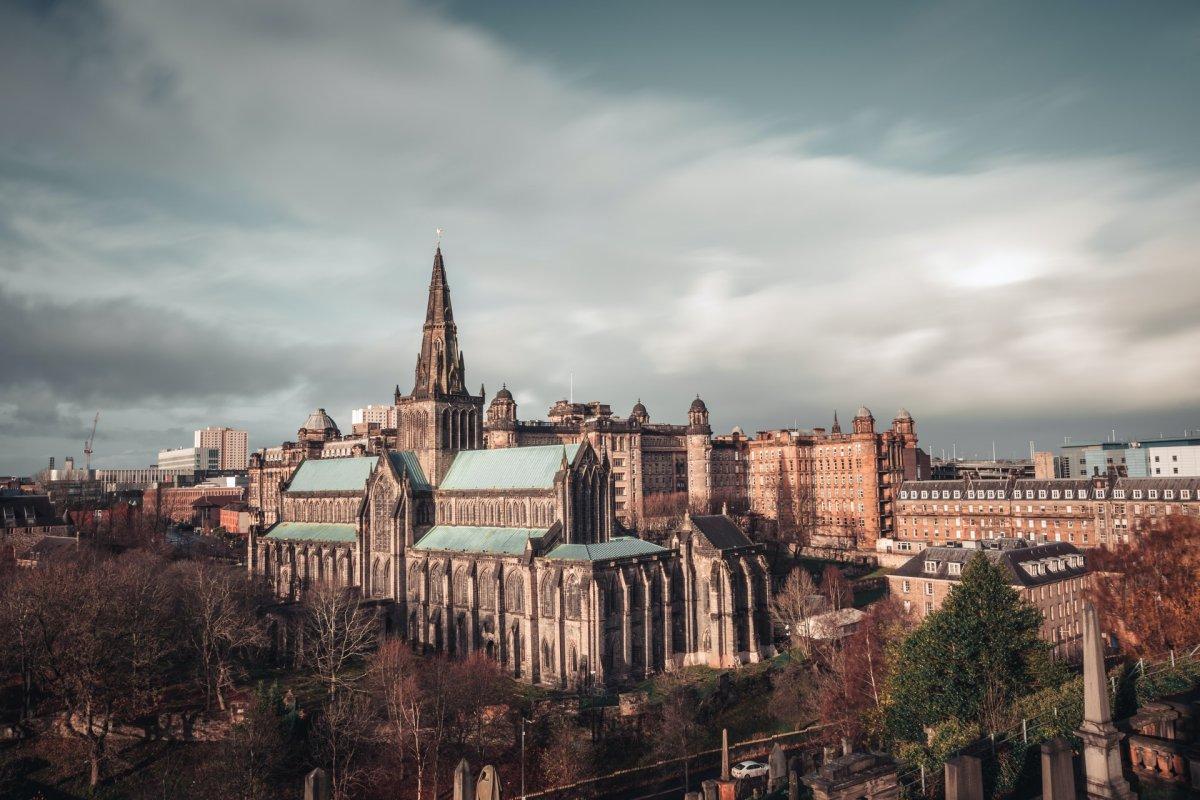
Completed in the 12th century, from 1136 to 1197, the cathedral stands on a hill in Glasgow East End district. It’s the oldest building of Galway and the oldest cathedral in Scotland.
Glasgow Cathedral looks quite simple from the outside, and visitors are often a bit disappointed when arriving. But as soon as you enter the building, you’ll be amazed by its huge size, the beautiful Gothic details, and of course by the colored stained glass windows. A must-do for anyone visiting Glasgow!
15. Skara Brae
Located in Orkney, the archipelago between the Shetlands and the main island, Skara Brae is an archaeological site known for being the best-preserved Stone Age village in Europe.
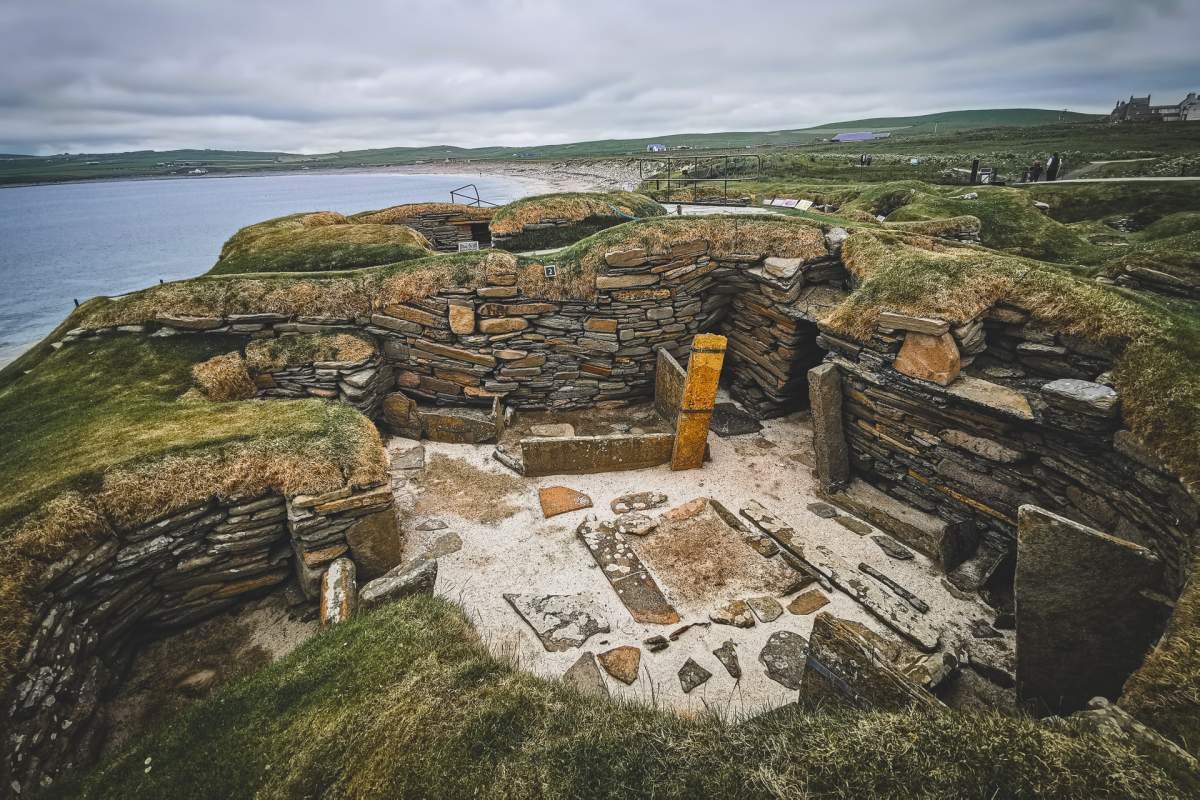
This Neolithic site dates back to 3200 BC and thus precedes the pyramids of Egypt. It was only in 1850 that it was discovered under a sand dune in an extremely remarkable state of preservation. The people who built these houses were ingenious: the houses had comforts such as beds, dressers, and cupboards. From what they left behind, archaeologists know that these people hunted, fished, and farmed.
Today’s visitors can enjoy a rare glimpse of life in those times on a guided tour of this magical site. Definitely the most popular attraction in the Orkney Islands.
16. Jedburgh Abbey
Located in the Borders, Jedburgh Abbey offers some of the most impressive ruins in Scotland.
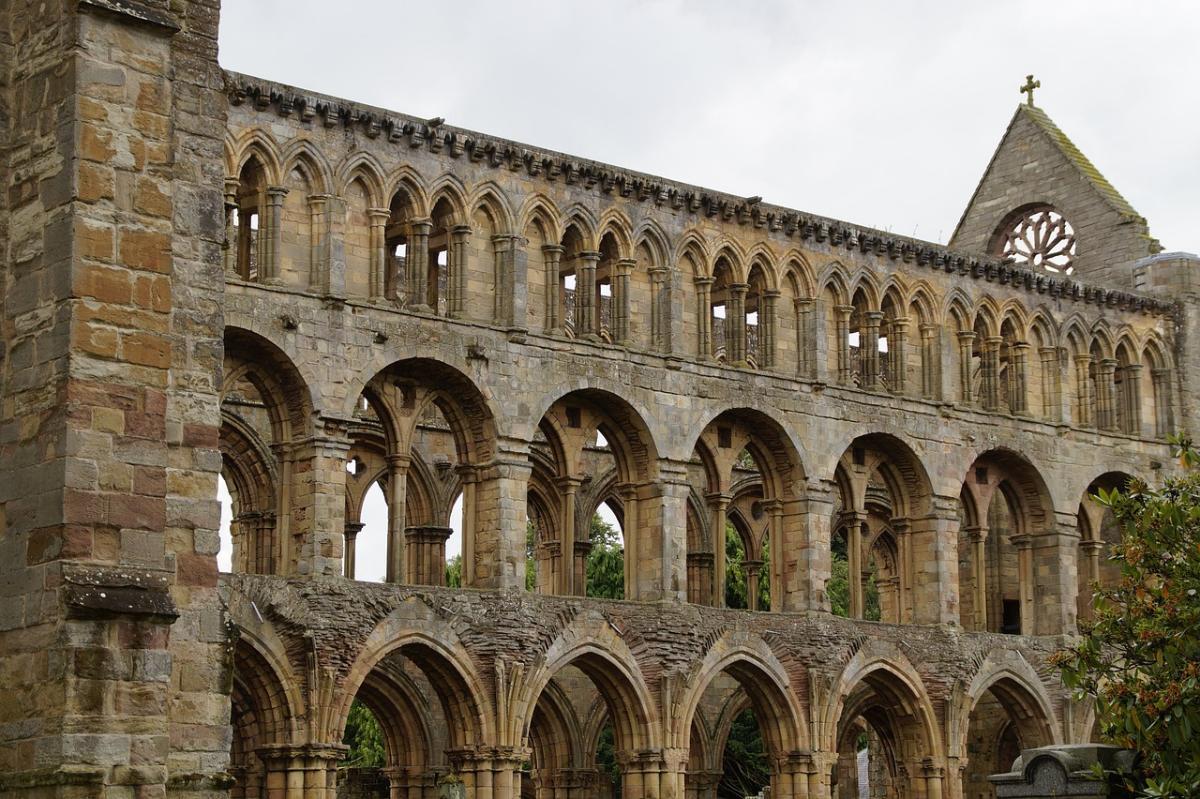
Completed in the 12th century, it’s a Romanesque and Gothic Augustinian abbey showing the Catholic Church’s hold on the area at the time. Located only 16 kilometers from the border with England, it was regularly targeted by invading armies and was abandoned in 1560.
Jedburgh Abbey amazes visitors and especially photographers with its series of arches on 3 levels. It has a magnificent cloister and a charming herb garden to explore. A center presenting the 8th-century engravings excavated in the surroundings has been built inside.
17. The Kelpies
The Kelpies are two 30-meter tall outdoor sculptures located near the Forth and Clyde Canal in Falkirk, a 40-minute drive from central Edinburgh.
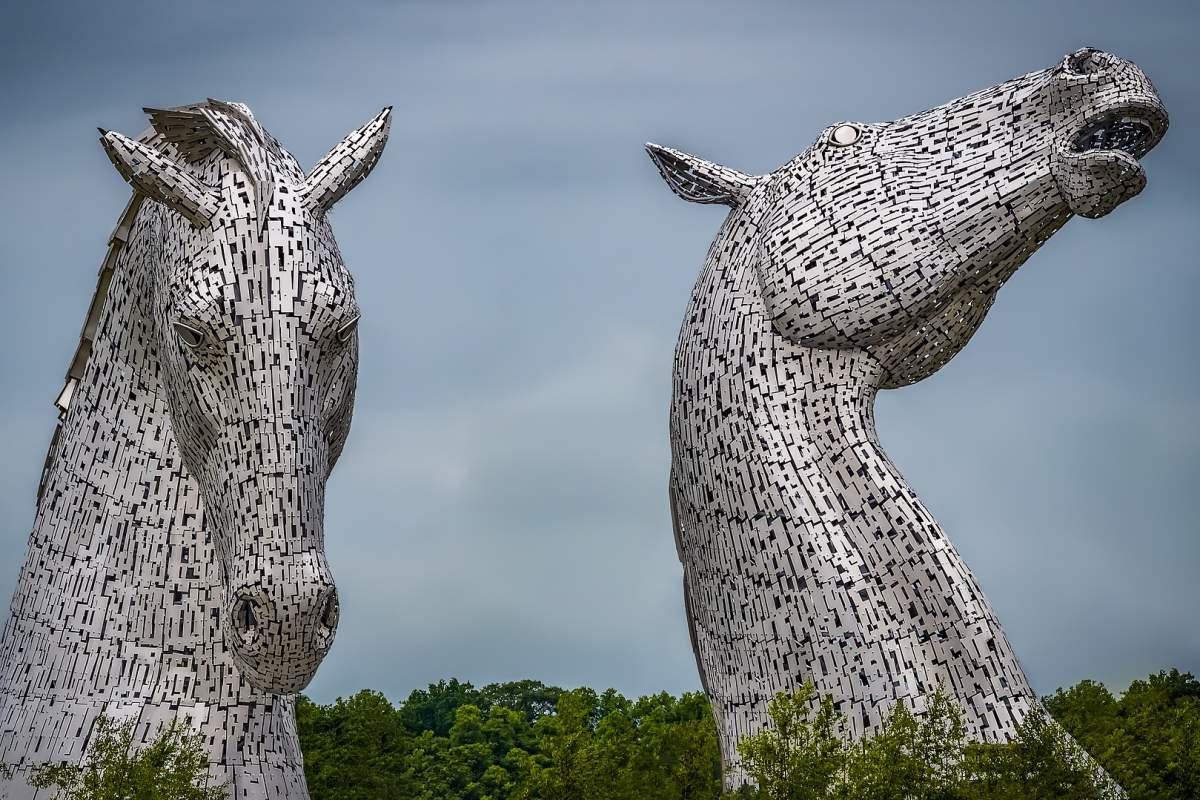
These metal sculptures, designed by Andy Scott, represent 2 horses’ heads. They were created in 2013 as a tribute to Falkirk’s industrial past and the beautiful horses that were essential to that industry, the Clydesdales. But these sculptures were named Kelpies, water beings of the Scottish lochs that, as the legend goes, have the ability to transform and appear to people in different ways. Sometimes as a woman, sometimes as a black horse, they transform in such a way to attract men into the water.
Accessible 24/7, the best time to visit the Kelpies is definitely at sunset, when the sunlight reflects on the sculptures. At night, they’re illuminated with spotlights that change colors, it’s simply stunning!
18. Mallaig
Located in the northwest of Scotland, Mallaig is a picturesque little fishing port that deserves its place on this list.
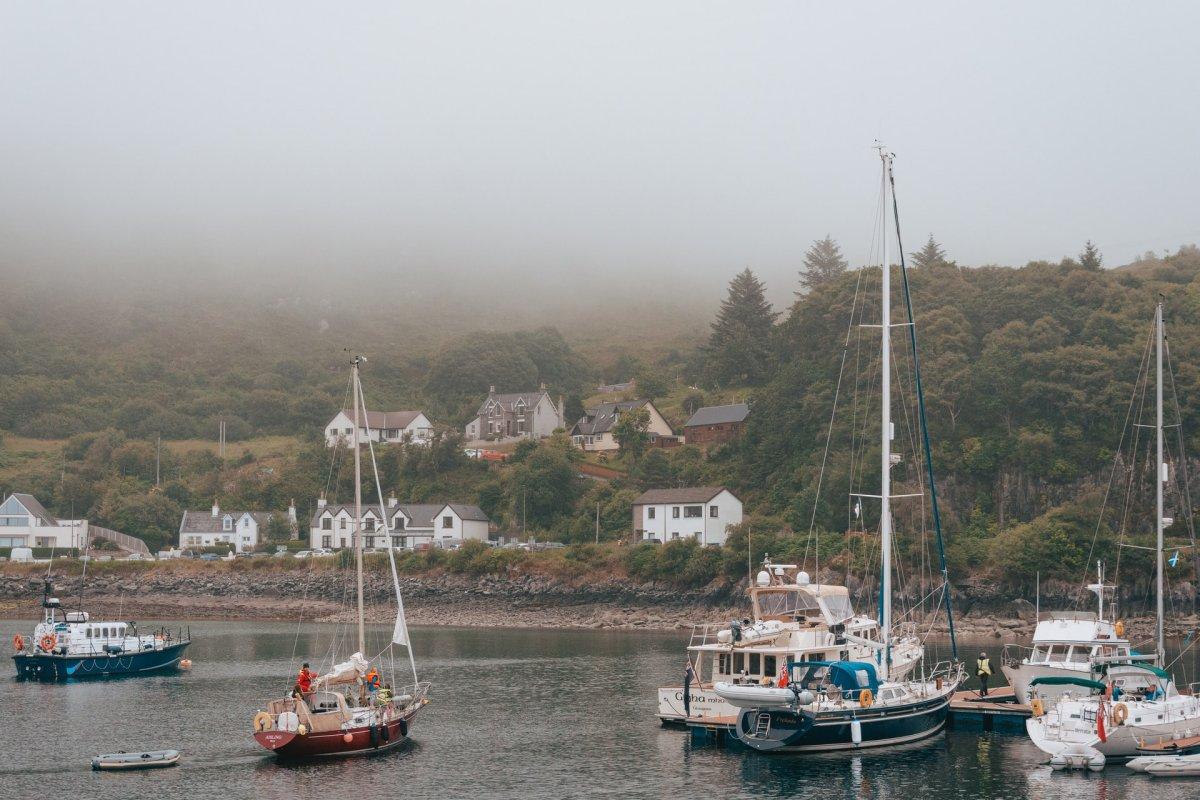
Mallaig is best known as the terminal (or starting point) of the Jacobite Express. Every day around 12:30 pm, the world-famous steam train stops in Mallaig, which comes alive with train passengers returning to Fort Williams, and the restaurants fill up. Mallaig is also the place to be if you want to take the ferry to visit the Isle of Skye.
This small village is actually an important meeting point, and many tourists pass through. Rather than taking the train, many people prefer to take the road between Fort Williams and Mallaig: this beautiful road follows the Jacobite Express railroad and crosses some extraordinary landscapes.
19. Forth Bridge
From Princes Street (Edinburgh’s main street), it takes only 40 minutes and £2.80 to reach a very impressive place in Scotland by bus. Overlooking the wide mouth that gave it its name, the Forth Bridge is a massive structure with a recognizable bright red color.
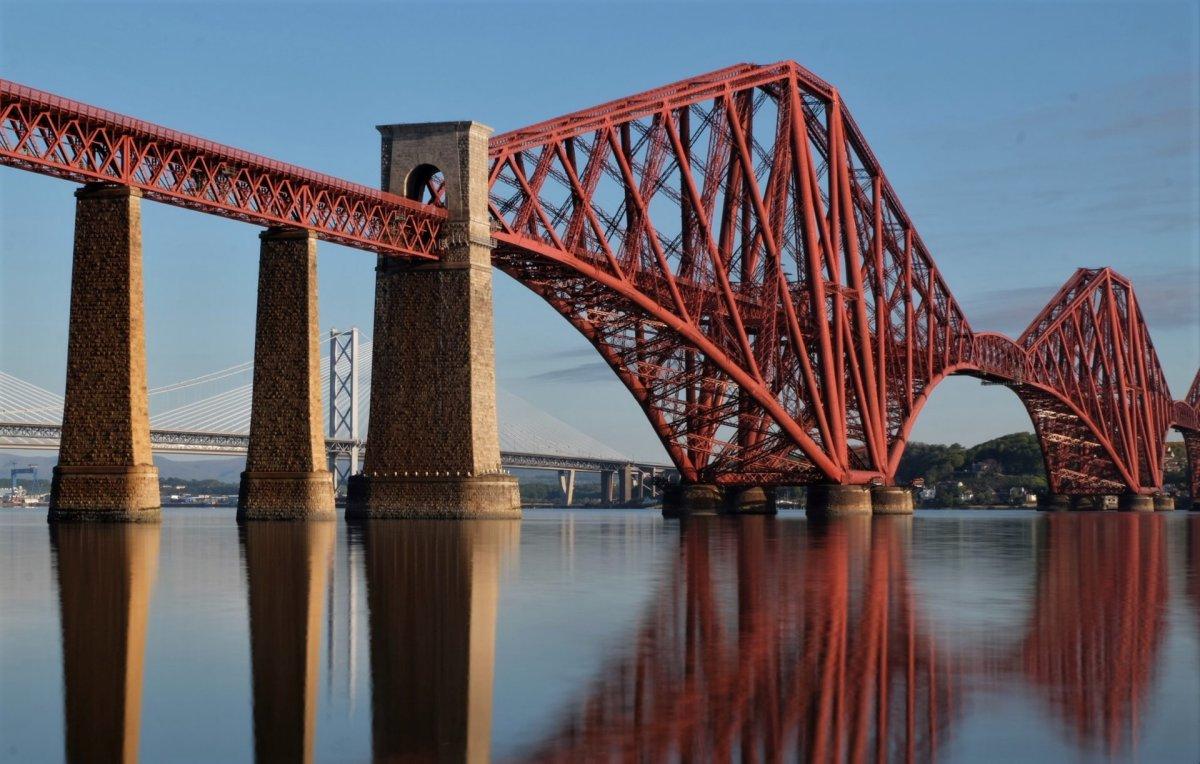
With its 2.5 kilometers long and its 58,000 tons of steel, the Forth Bridge is certainly not an ordinary bridge: It’s the second-longest bridge of its kind in the world!
Inaugurated in 1890 by John Fowler and Benjamin Baker, the Forth Bridge was added in 2015 to the very prestigious UNESCO World Heritage list.
Famous Natural Scottish Landmarks
When you think of Scotland, you first picture the breathtaking wilderness of the Highlands. Between the lochs, the mountains, the cliffs, and the valleys, Scotland offers mystical landscapes under the fog and the rain, that turn into enchantment as soon as the sun finally comes out.
Here are the best natural wonders that are considered major landmarks in Scotland.
20. Loch Ness
The Loch Ness is a great mystery of all times and certainly the most famous Scotland landmark. Located in the heart of the Highlands not far from Inverness, the lock is well known for Nessie, the monster that is supposed to live in its deep waters.
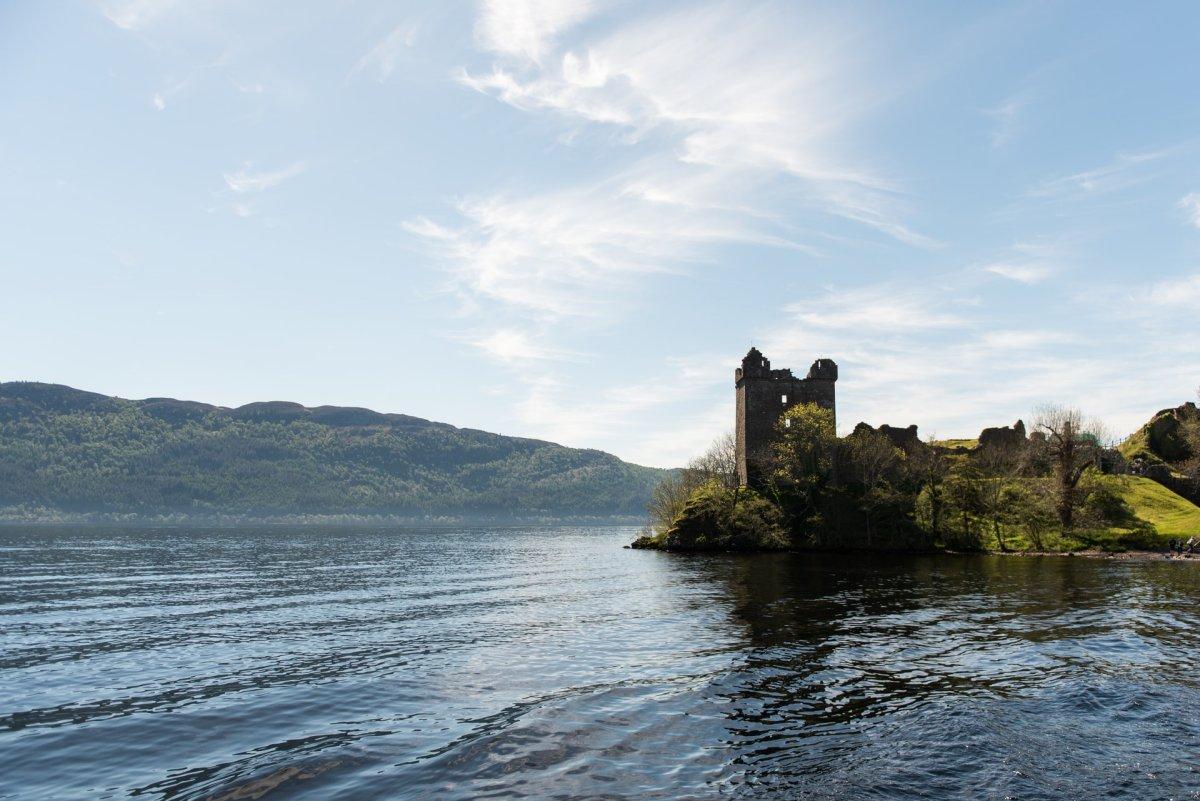
With its 39-km length, Loch Ness is the second-largest freshwater lake in Scotland after Loch Lomond. The legend of Loch Ness exists since 1930 and is supported by much evidence. It could even go back to the year 565 according to the story of an Irish monk who would have saved one of his disciples from certain death while he was trying to swim across the lake.
Besides the famous legend, visiting Loch Ness is also discovering the green shores of the lake and the breathtaking views of the surrounding nature. On the north side, Urquhart Castle is one of the most popular tourist attractions.
21. Isle of Skye
The Isle of Skye, the largest island of the Inner Hebrides, is one of the most beautiful places in all Scotland.
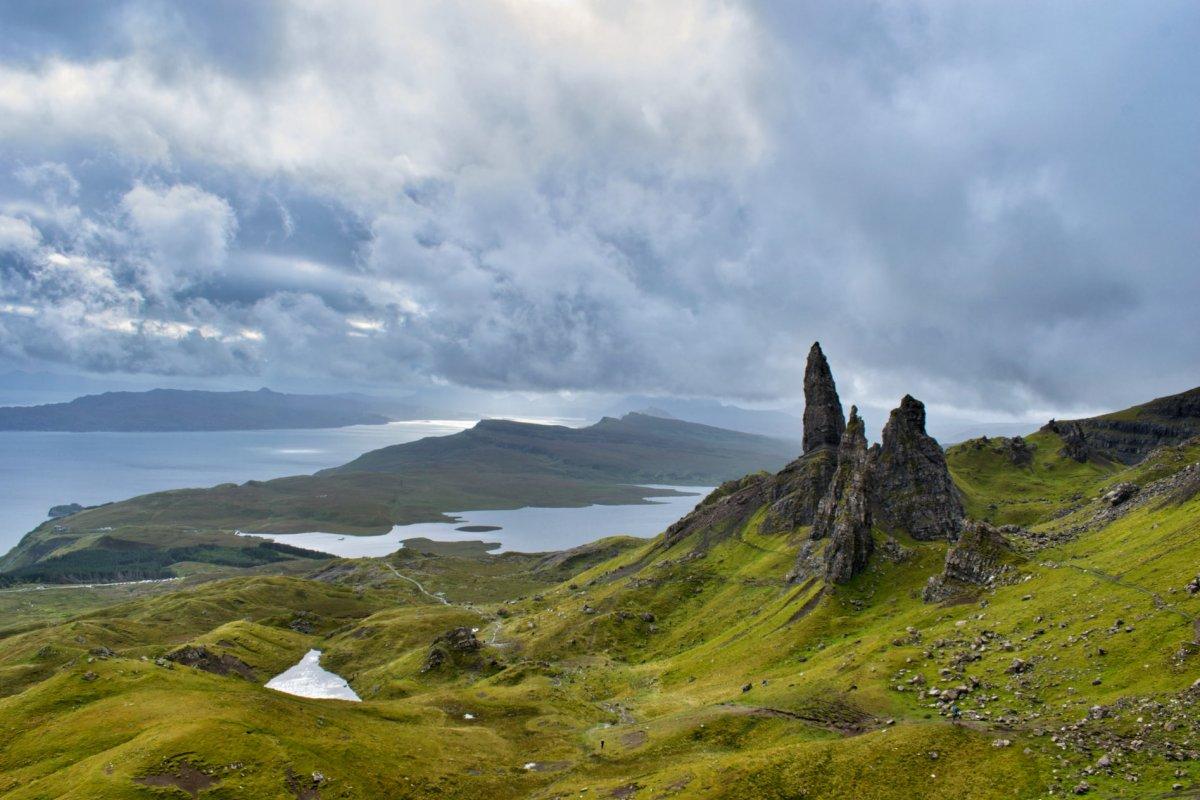
It’s hard to resist the beauty of the island’s landscapes sculpted by the centuries and the winds. The Old Man of Storr, Kilt Rock, or the Quiraing, to name but a few, are enough to deserve a visit to the Isle of Skye and make it an essential stop on a road trip in Scotland. Over the years, the island has become more and more popular among tourists thanks to the success of the movies filmed there, and the many documentaries praising it.
The most usual way to discover the Isle of Skye is counter-clockwise: enter by the Skye bridge, continue north, then west, then south, and finally east.
22. Bow Fiddle Rock
Located 1.5 hours drive east of Inverness, the Bow Fiddle Rock is a natural wonder off the coast of the town of Portknockie.
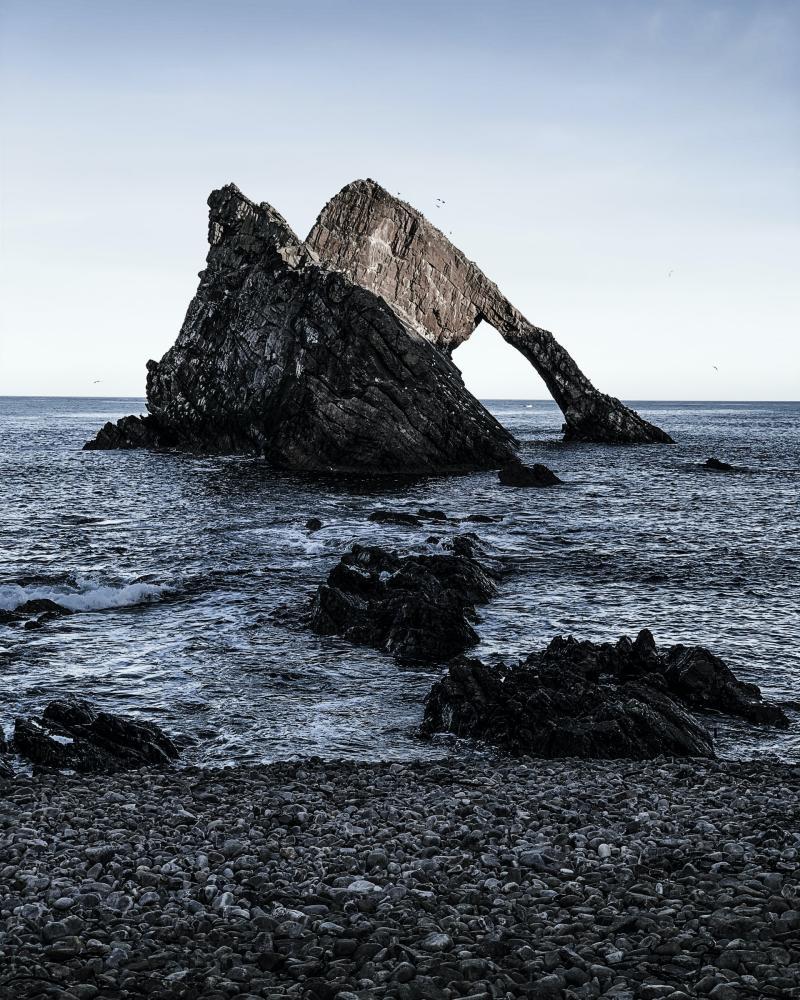
The name that was given to this rock formation comes from its similarity with the curve of a fiddle. It’s the remnant of the collision of 2 continents that took place several hundred million years ago.
For photographers and nature lovers, the Bow Fiddle Rock is an endless playground. At high or low tide, at sunrise or sunset, with or without fog, the place is always fascinating. Every moment of the day is unique, and that’s without counting some annual exceptions. Indeed, 2 weeks a year in May and August, you can see the sun rises in the arch formed from the rock.
23. Cairngorms National Park
Located in the heart of the Scottish Highlands, the Cairngorms National Park is the largest park in the UK. It features a very mountainous landscape with 4 of the 5 highest peaks of Scotland.
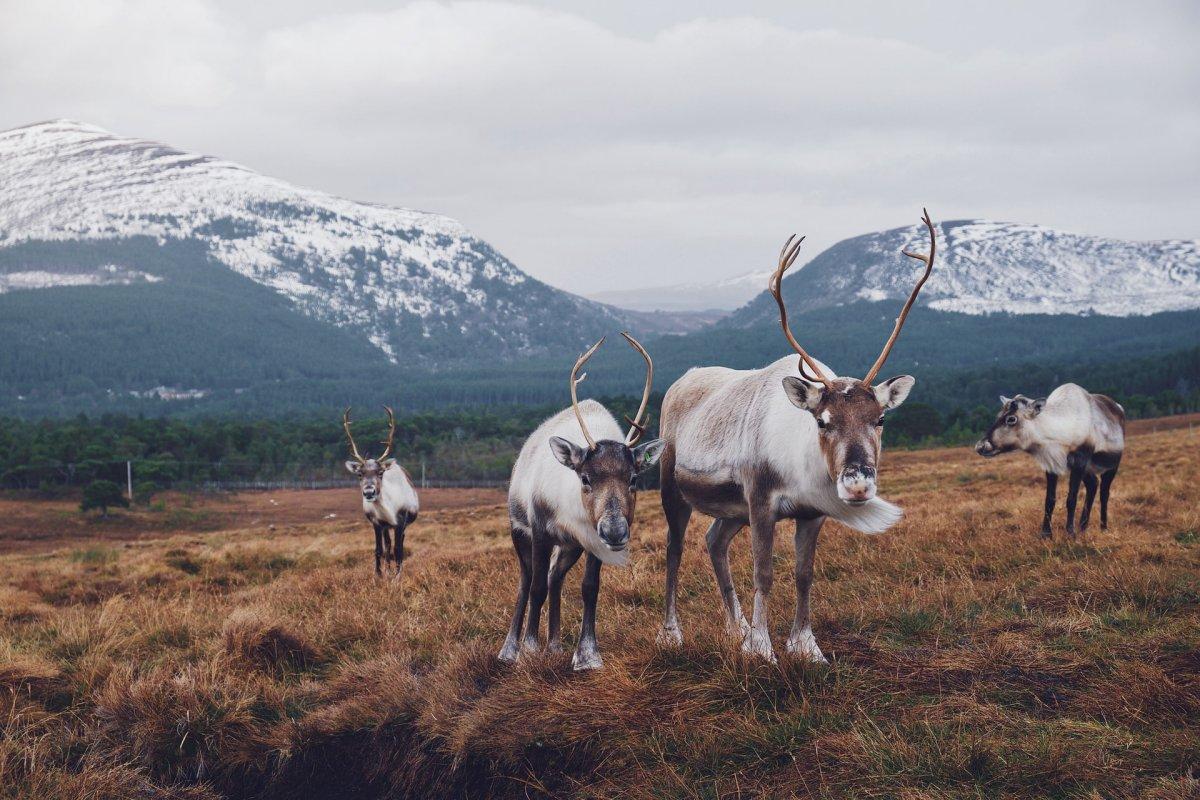
Twice the size of the Lake District, the Cairngorms National Park is home to some of the UK’s most spectacular woodland trails, mountains, rivers, lochs, wildlife viewing points, villages, and distilleries. There are also castles, the famous Balmoral Castle and Braemar Castle.
If you visit the Cairngorms, don’t miss some of the most beautiful places such as Loch An Eilein, Carrbridge, Ruthven Barracks, or the scenic Snow Roads.
24. Loch Lomond & The Trossachs National Park
Located in the center of Scotland, very quick and easy to access from Edinburgh or Glasgow, Loch Lomond & the Trossachs National Park is all you can imagine when thinking of Scotland.
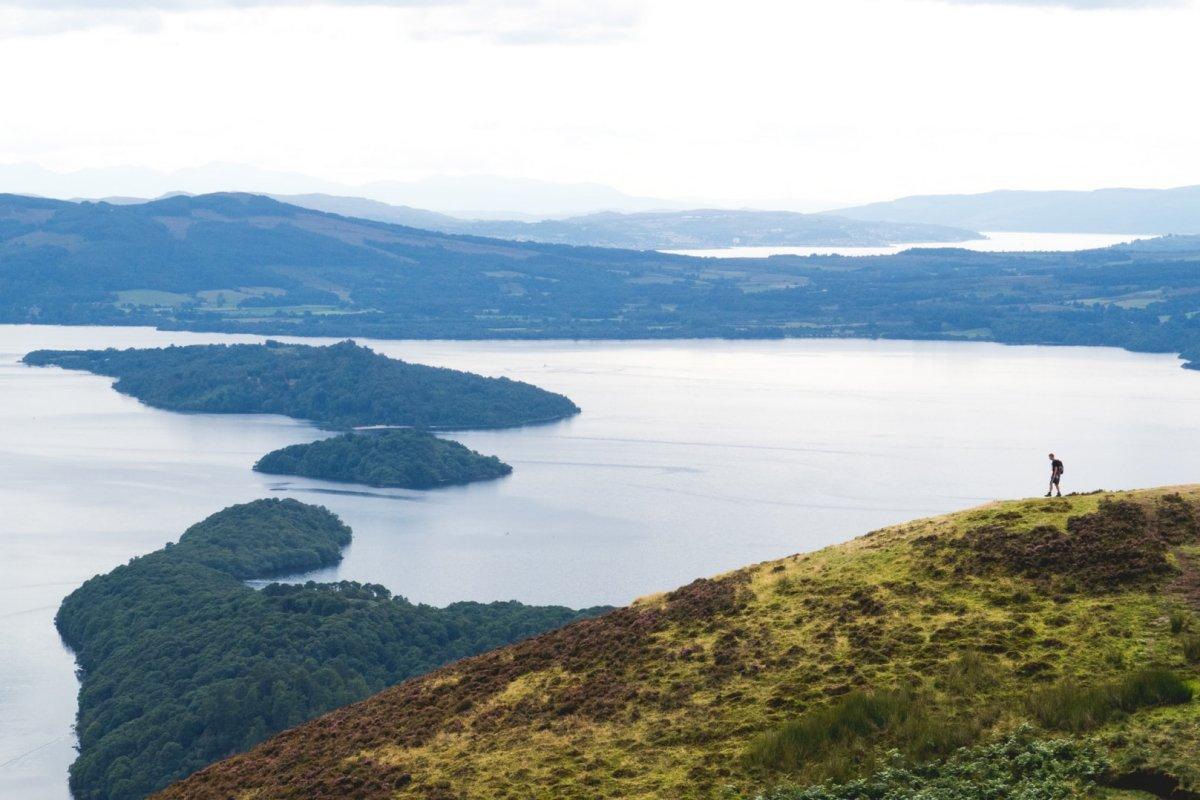
Called “the Highlands in miniature”, the Loch Lomond & the Trossachs National Park is made up of mountains and forests, which stretch out to beautiful lakes and hills. Trossachs means “place of crossing” in Gaelic. These natural areas are indeed popular with hikers, who meet along the way and in the small villages nestled on the mountains.
Some of the highlights of the park include Conic Hill and Ben Lomond for hiking; Doune Castle and the famous Stirling Castle for the historical visits.
25. Staffa
Located off the Isle of Mull in the Inner Hebrides, Staffa is another island with an incredible landscape that is sometimes arid, geometric, and even apocalyptic in some ways.
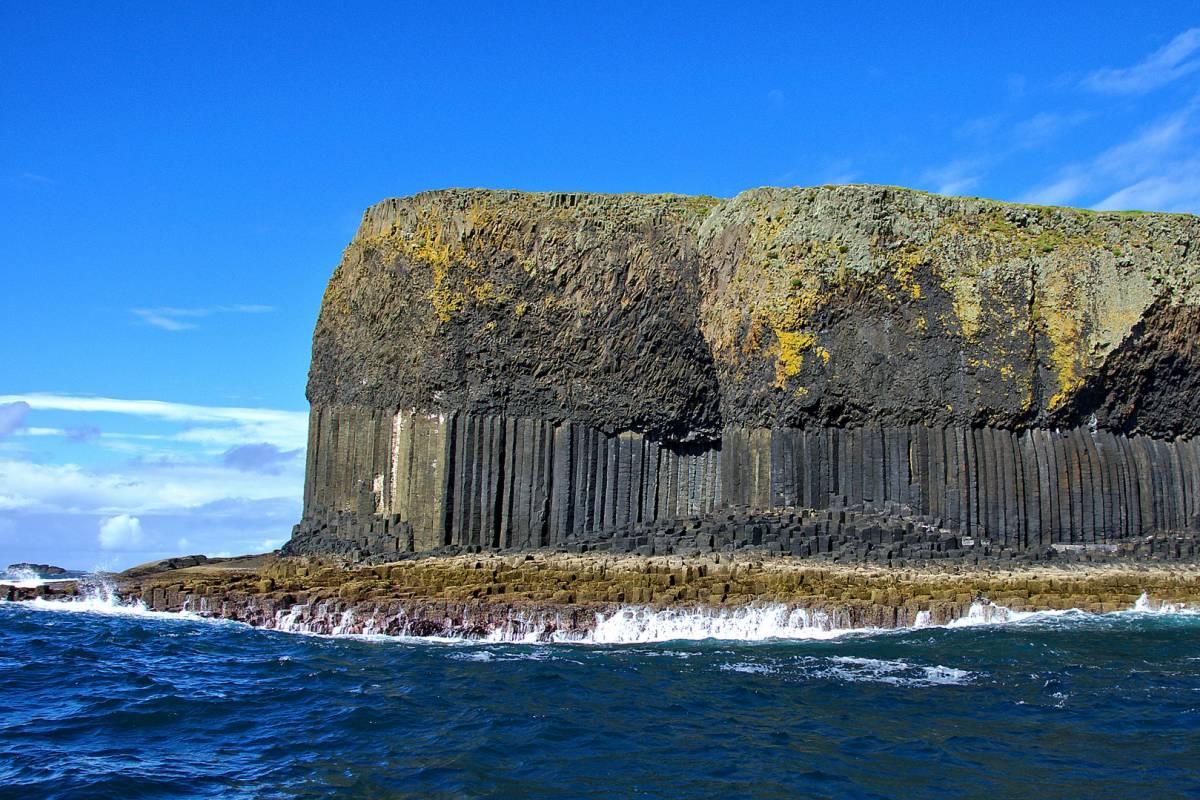
If today the only living beings on the island are puffins, Staffa’s history is full of twists and turns. This is what attracts some tourists, curious to know the secrets and legends. But the main attraction is definitely the caves, the most famous being the Fingal cave.
Like Giant’s Causeway in Northern Ireland, Fingal Cave has basalt columns. The sound of the cave, as the water rushes in, is the most extraordinary. The air brushes against the columns and creates a harmonious echo, sometimes similar to the sound of organs.
26. Ring of Brodgar
The Ring of Brodgar is one of the most iconic sites to visit on the Orkney Islands. It’s one of the largest Neolithic stone circles in the UK.
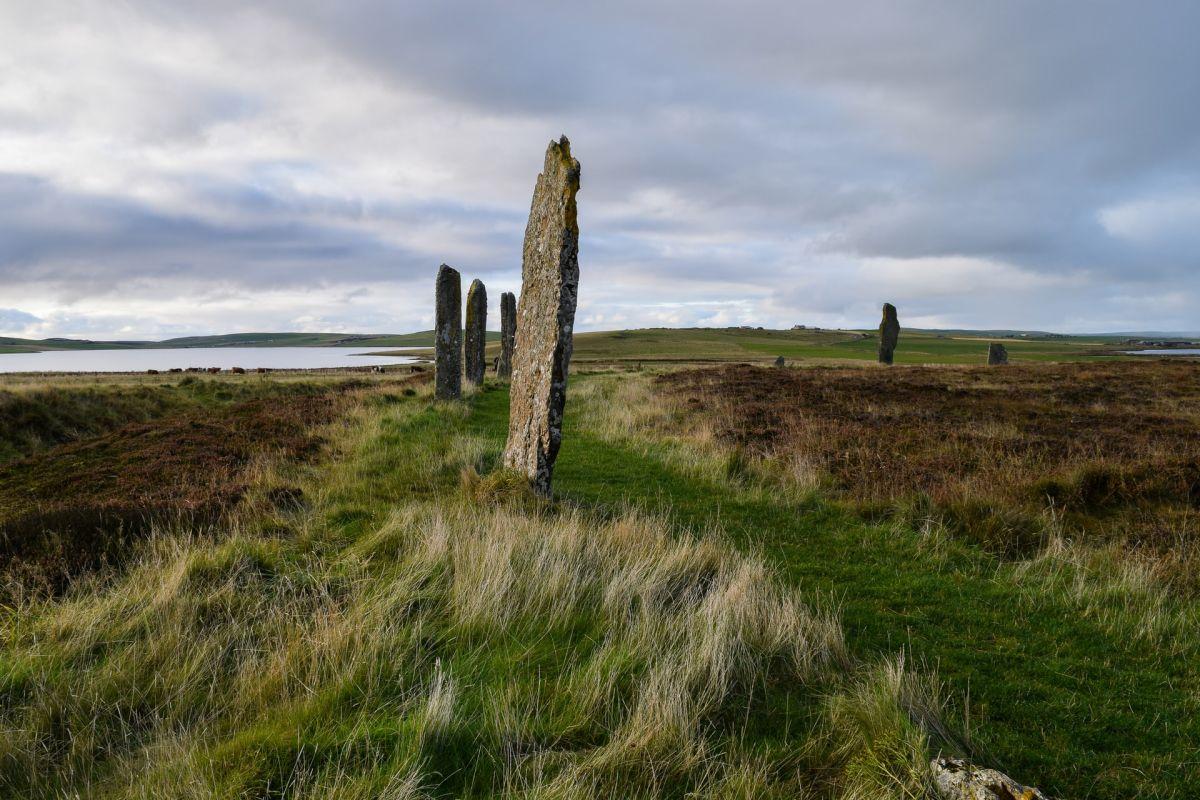
Located on a thin strip of land between Loch Sternness and Loch Harray, the Ring of Brodgar is a near-perfect circle of 36 huge stones ranging from 2 to 5 meters. Archaeologists estimate that these stones date from the late Neolithic period, between 2500 and 2000 BC.
Classified as a Unesco World Heritage Site since 1999, the site has something magical. The entire scenery, with the small hills forming an amphitheater and the isthmus between the 2 lochs creates a very special atmosphere. It’s believed that the circle was used as a meeting place for ceremonies, probably involving feasting and commemoration of the dead.
27. Lewis and Harris
The island of Lewis and Harris is located in the north of the Hebrides Islands. Often overlooked by tourists, Lewis and Harris is nevertheless often listed among the most beautiful islands in the world.
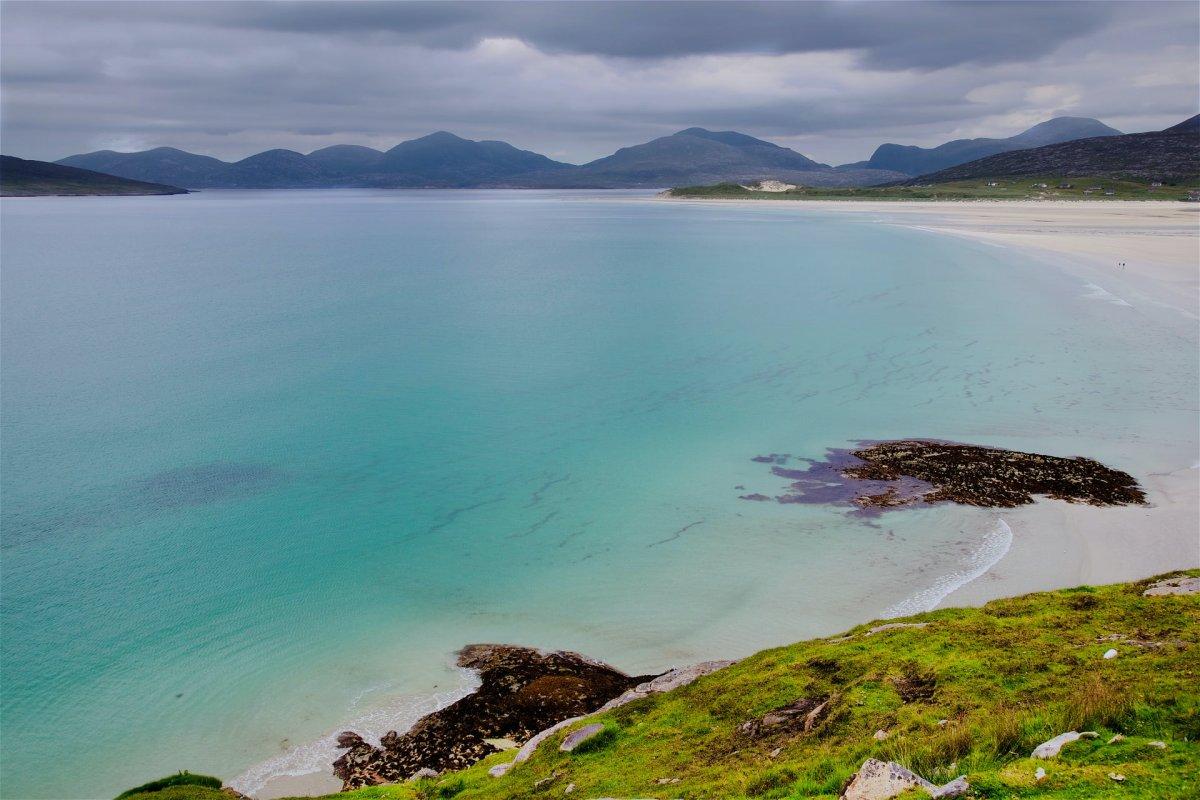
Lewis is the northern part of the island and the most extensive. It has large areas of moorland and peat bogs, beautiful white sandy beaches, and steep cliffs. Harris, in the south of the island, has a more rugged landscape, and is known for its preserved fauna: besides the sheep that live on the eastern coast, you’ll probably be able to see many seals.
Harris and Lewis is often mentioned in the world’s most beautiful beaches rankings, and for good reason: the coasts offer endless stretches of white sand, and some of them will make you think of the Caribbeans! The beaches of Luskentyre Traigh, Seilebost, and Stornoway are the most beautiful.
28. Callanish Standing Stones
Located on the west coast of the Isle of Lewis and Harris in the Outer Hebrides, the Callanish Standing Stones is a megalithic site dating from the Stone Age erected on top of a hillock.
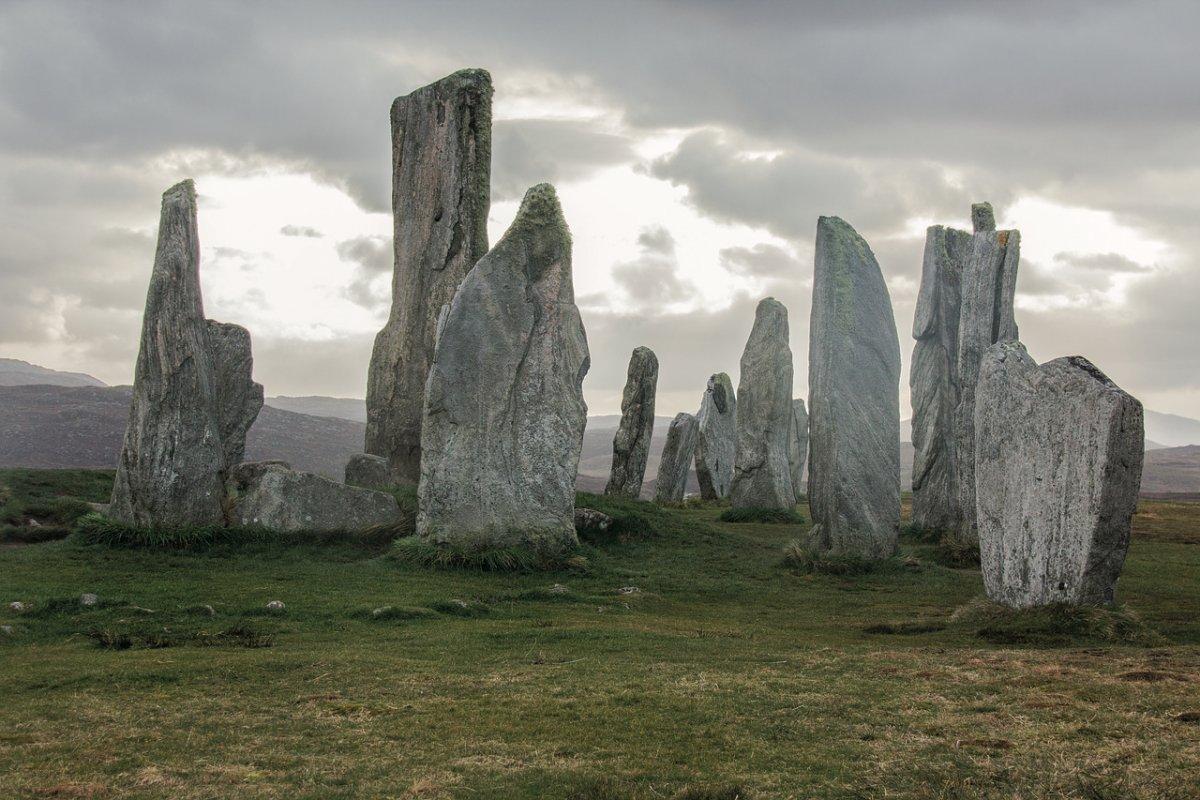
Famous all over the world, the site features a circle of standing stones dating back to prehistoric times (around 3000 BC), facing the sea and aligned according to the cardinal points. Abandoned around 800 BC, the site was excavated by 1.5 meters in 1857.
Callanish is made up of 50 monoliths up to 4 meters above the ground, out of which 13 are arranged in a circle. In the center, there’s a large megalith and a burial chamber where human remains have been discovered. The site inspires all sorts of irrational interpretations because no investigation to this day has revealed its origin and function.
29. Glen Coe
Located in the heart of the Highlands in the northwest of the Trossachs and Glasgow region, this valley is a green and wild area, untouched and encircled by the high mountains.
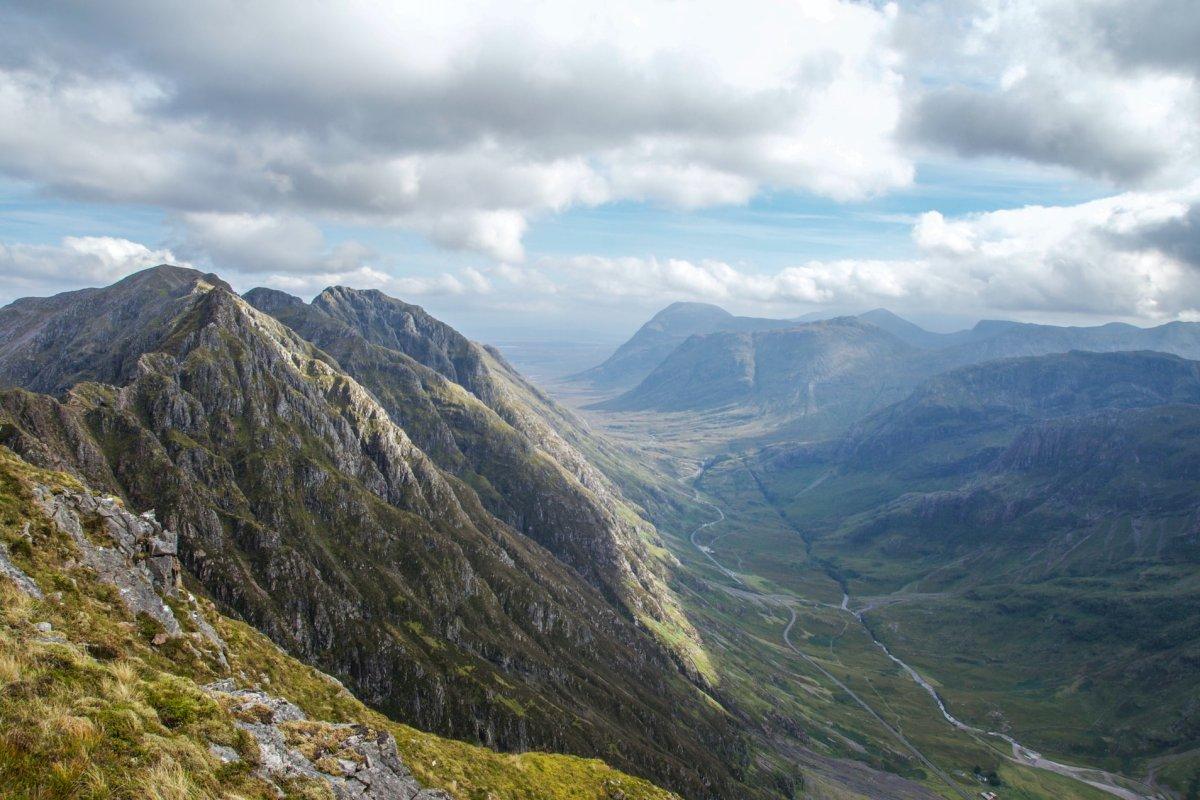
Glen Coe is the most famous valley in the country and has been used many times for movie sets such as Braveheart, James Bond and Harry Potter. Unfortunately, the valley is also known for having been the scene of the Glen Coe Massacre in 1692.
Glen Coe is one of the best places for outdoor activities in Scotland, especially for hiking and climbing lovers. The whole valley is suitable for it, with its countless paths and steep slopes. The Highlands offer an untamed and rich nature, with somewhat unstable weather, but very charming.
30. Ben Nevis
Located in Glen Nevis, the other major valley and mountain range with Glen Coe in Scotland, Ben Nevis is the highest point in the UK.
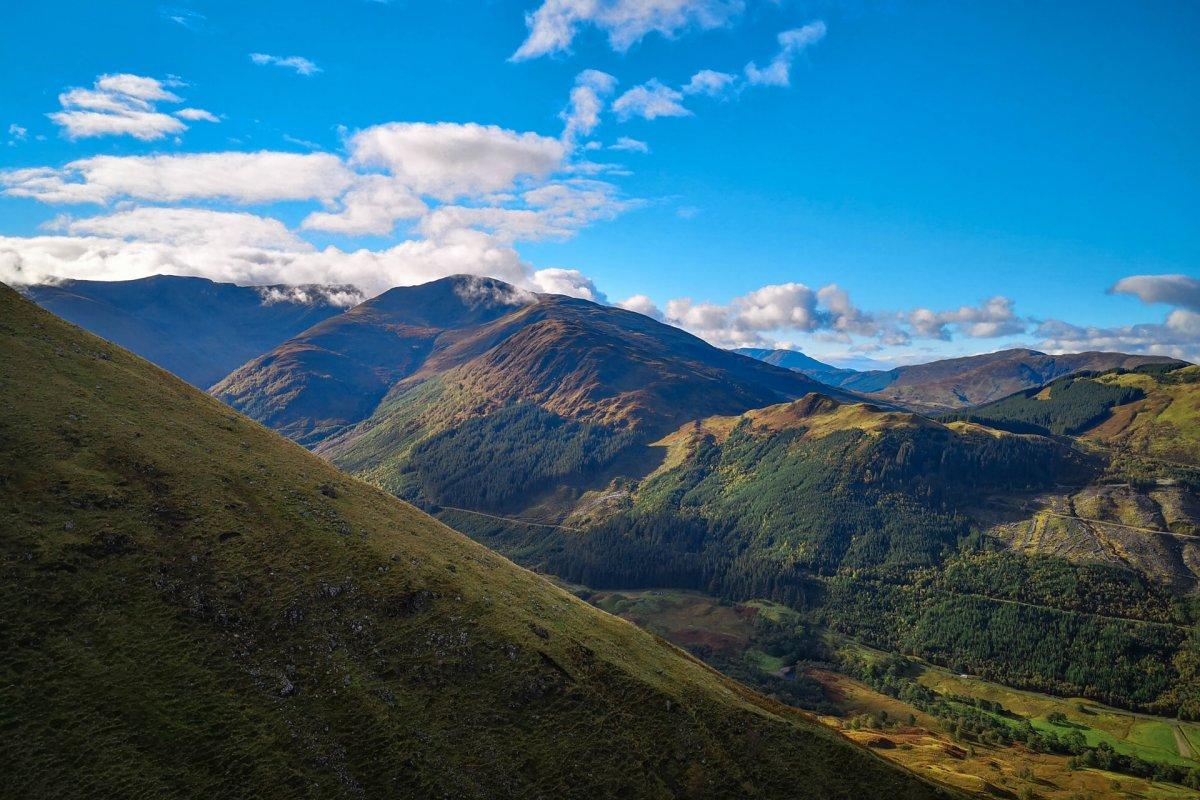
Rising to about 1,345 meters above sea level, Ben Nevis is a popular destination for tens of thousands of hikers each year in the summer. For beginners, you should know the climb to Ben Nevis takes 7 hours round trip. The trek is in any case an incredible experience: the beauty of the landscapes along the main road, winding between mountains where multiple waterfalls flow, and where sheep and cows graze will delight you.
In winter, Ben Nevis is a popular place for skiers. The Nevis Range station and its cable car offer a breathtaking panorama of the mountain and the valley.
Map of the Famous Landmarks Scotland Has to Offer
Here’s the map of the top 30 famous natural and historical landmarks in Scotland. To get it, simply click on the image below to open it in Google Maps. Then click on the “star” icon to save it to your own maps.
More Famous Scotland Landmarks
Want to discover more incredible landmarks in Scotland? If so, I have other posts you’ll love reading, for sure!
Learn more thanks to the following city-based guides:
You can also check the full guide of all the famous UK landmarks 👉 The Very Best Landmarks in the UK.
For more, you can check all our UK guides.
I hope you’ve found all the information you needed to make your Scotland bucket list through these posts. Don’t hesitate to comment below if this is the case, I would be very pleased to read your feedback!
Loved this post? Share it with your friends by using the buttons below, I’m sure they’ll love it! 😊
Travel Tools
Use any of our recommended links below to book your trip. You pay the same, and we earn a small fee; a great way to support us!
Pin this to Pinterest!
Enjoyed this guide? Then help a fellow traveler and pin it! They'll most definitely love you for it, 100% guarantee.
